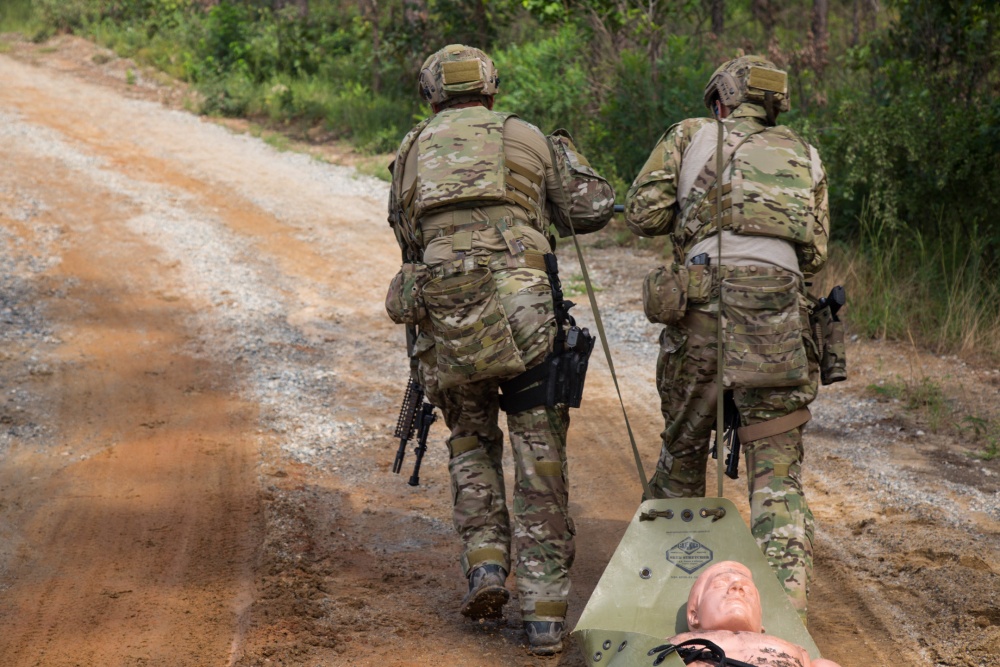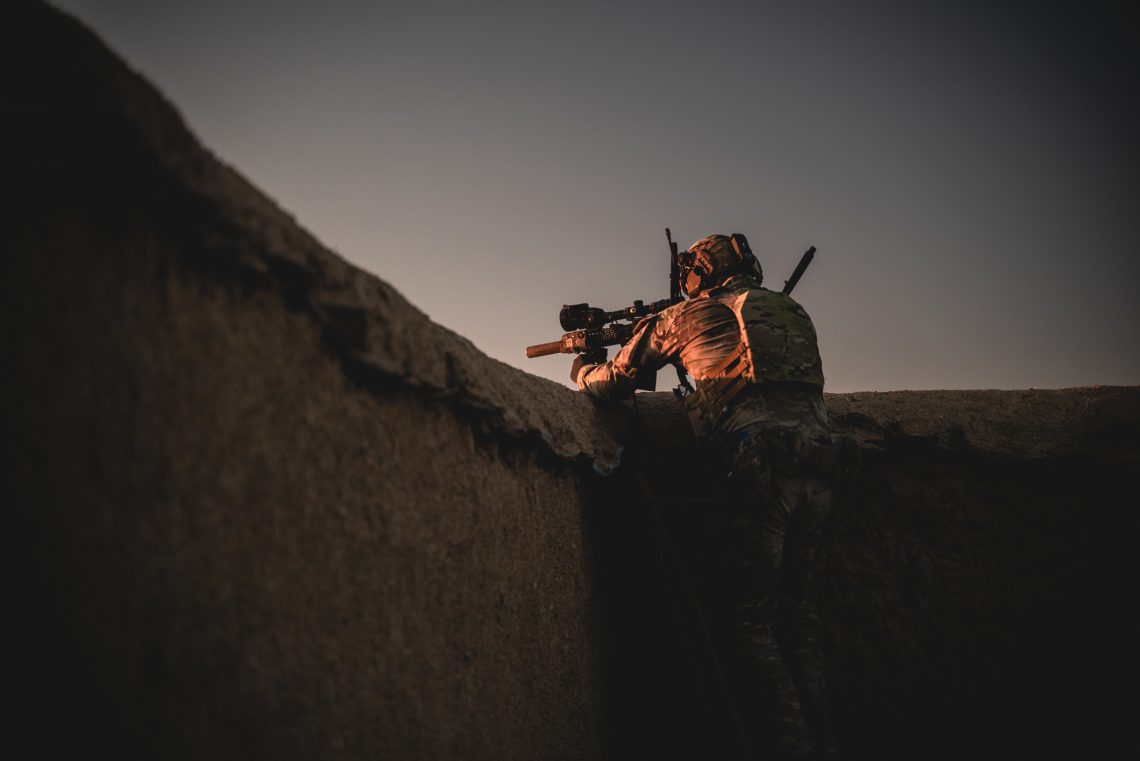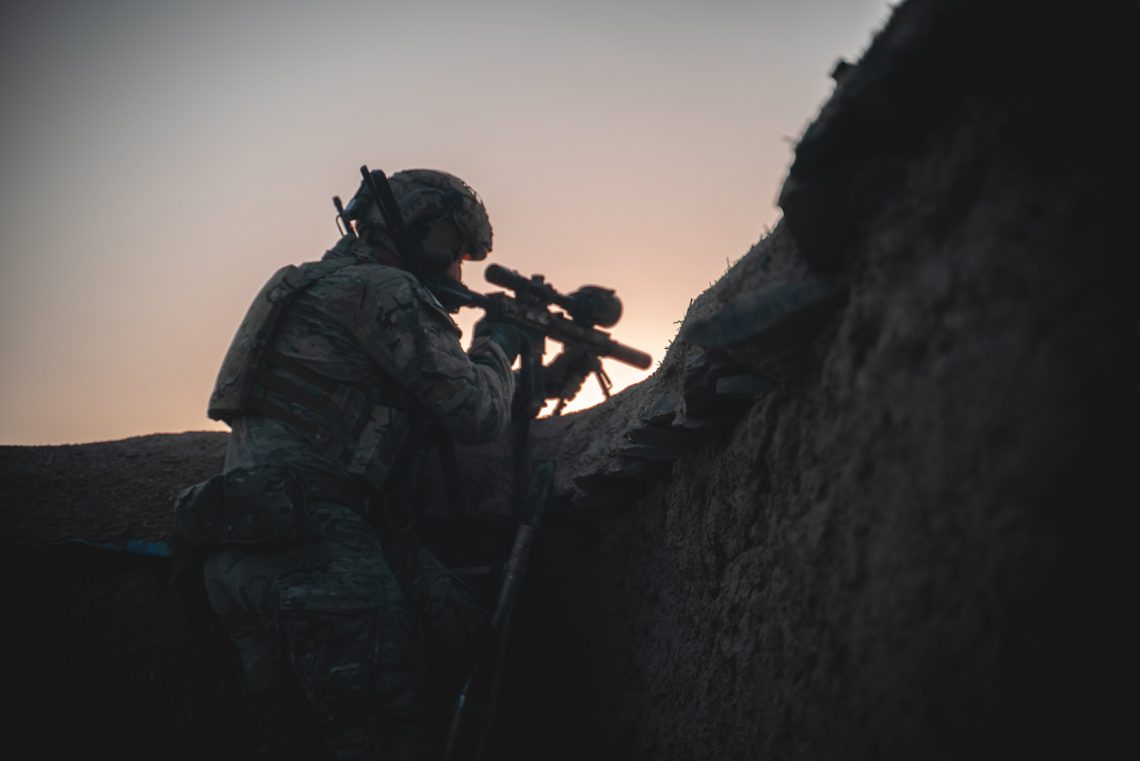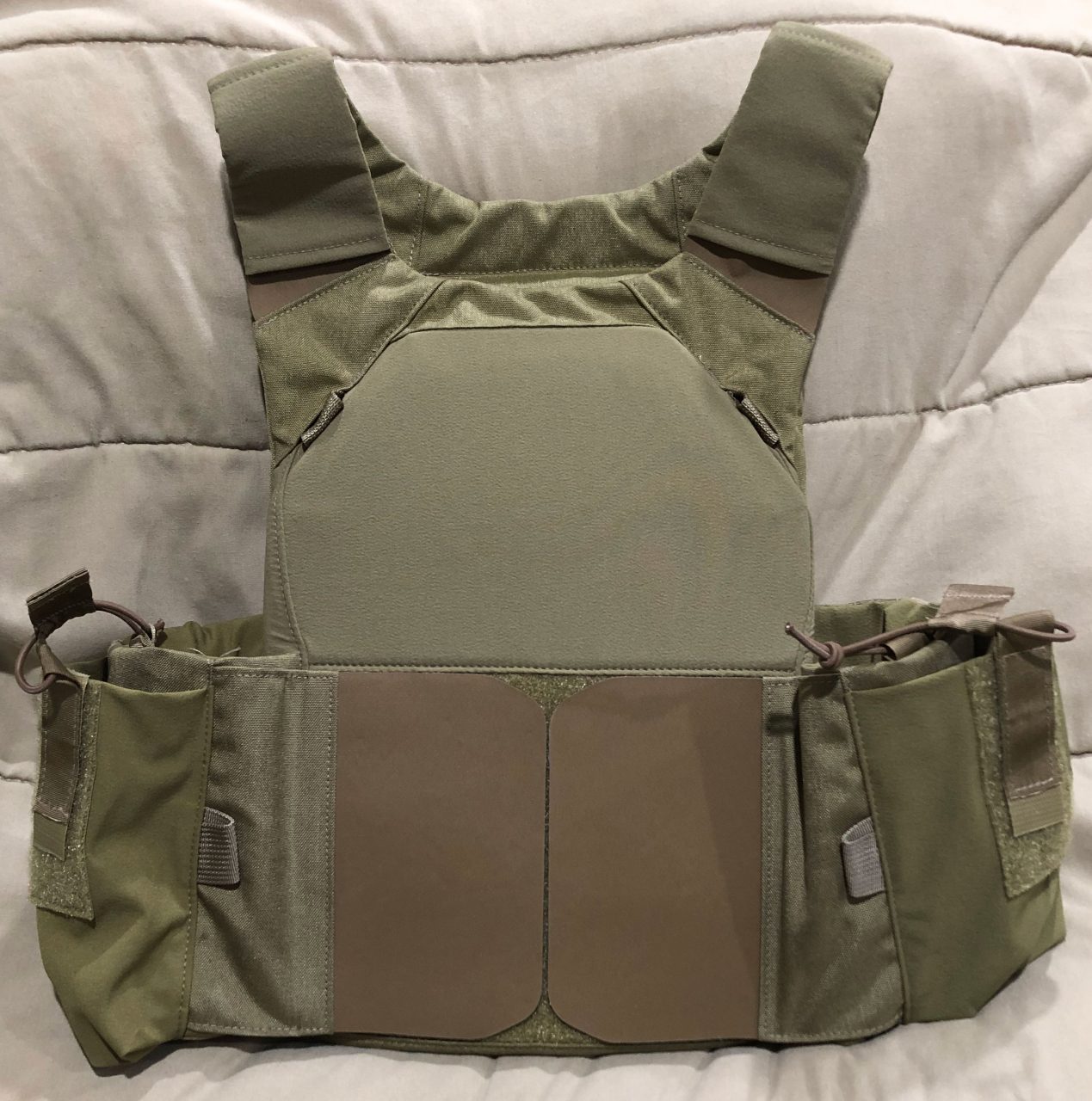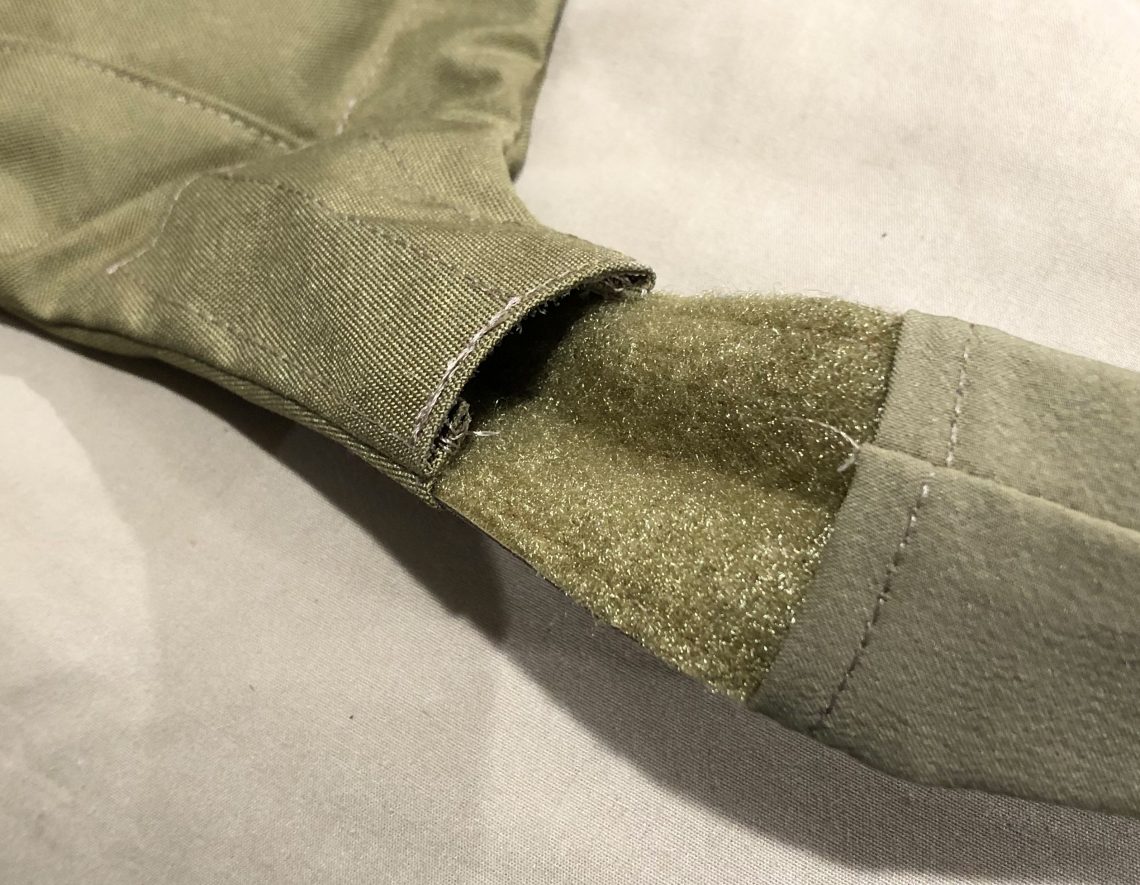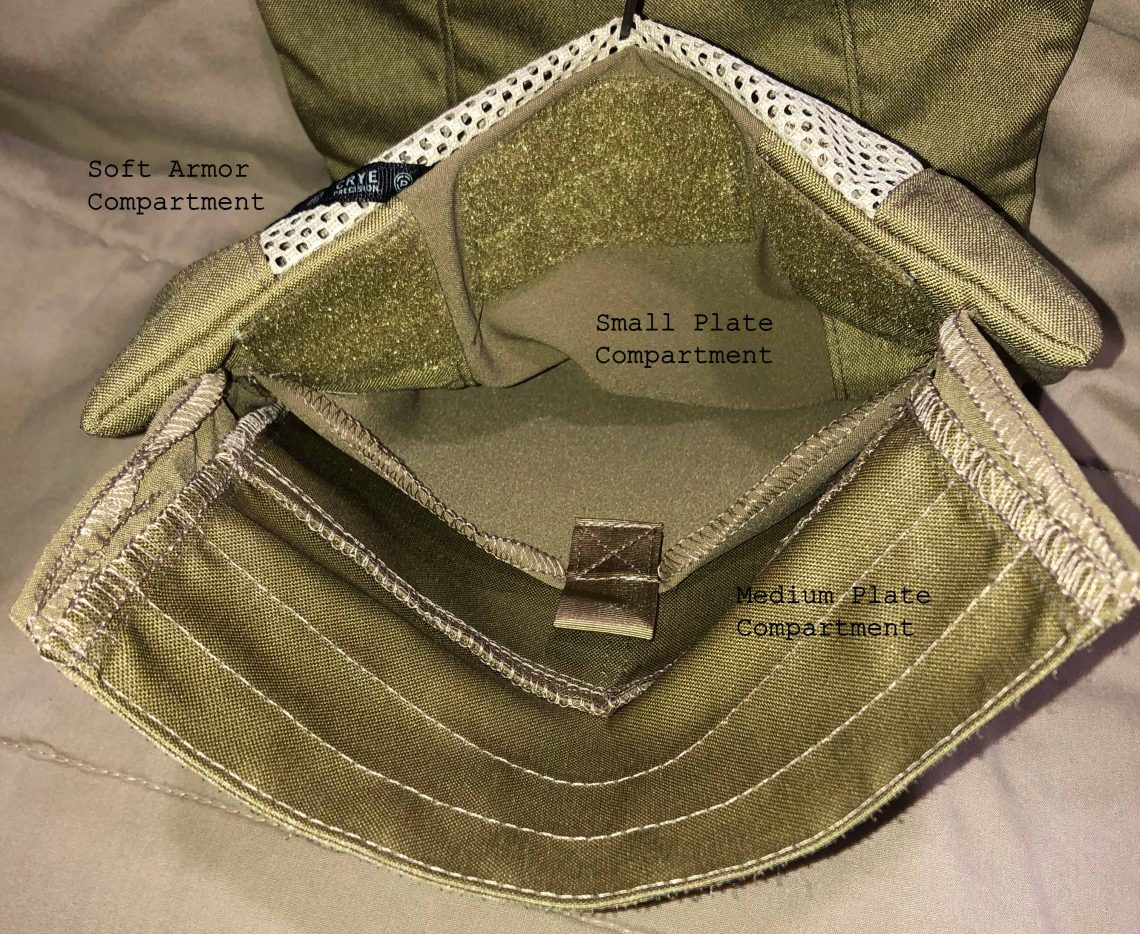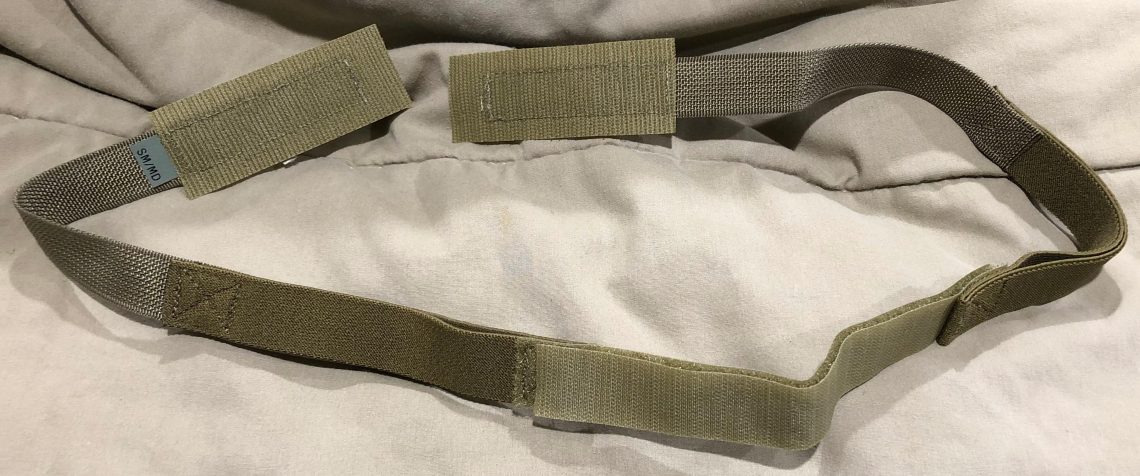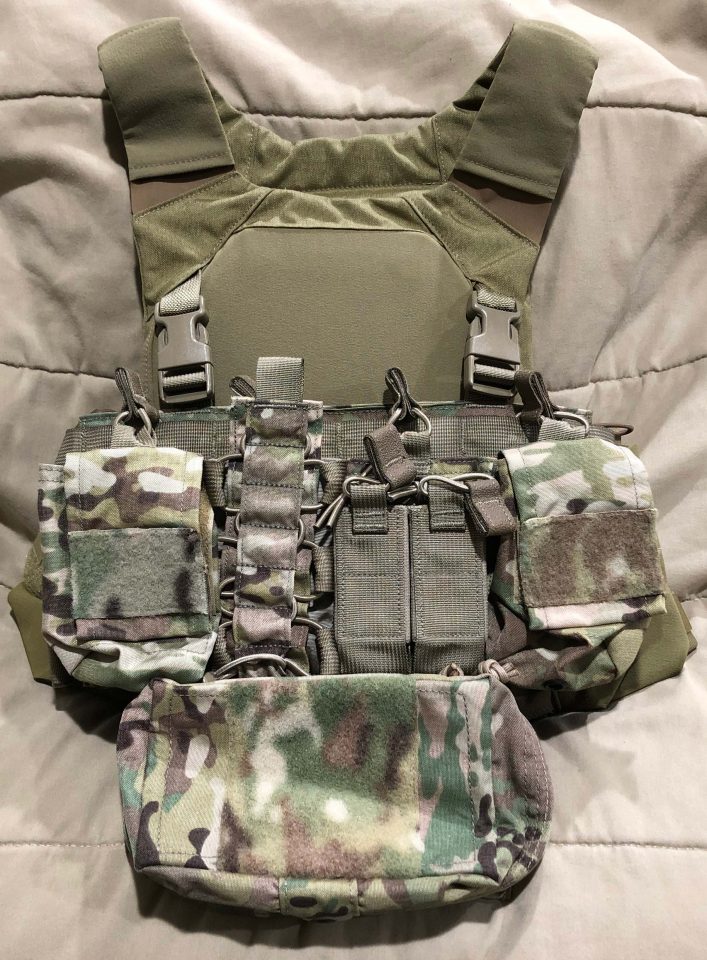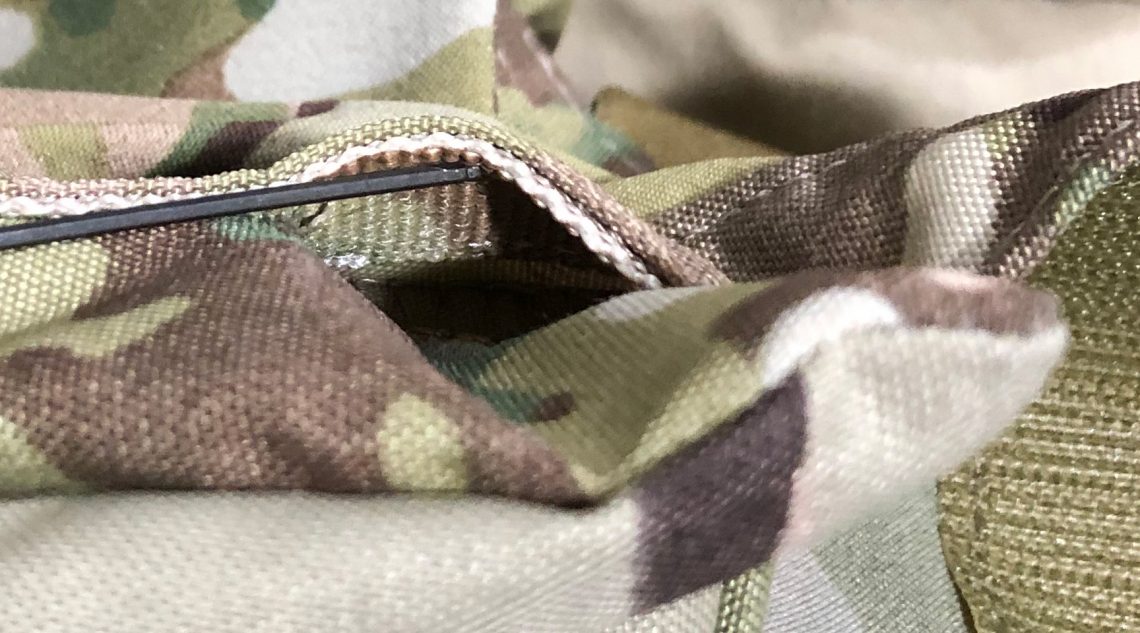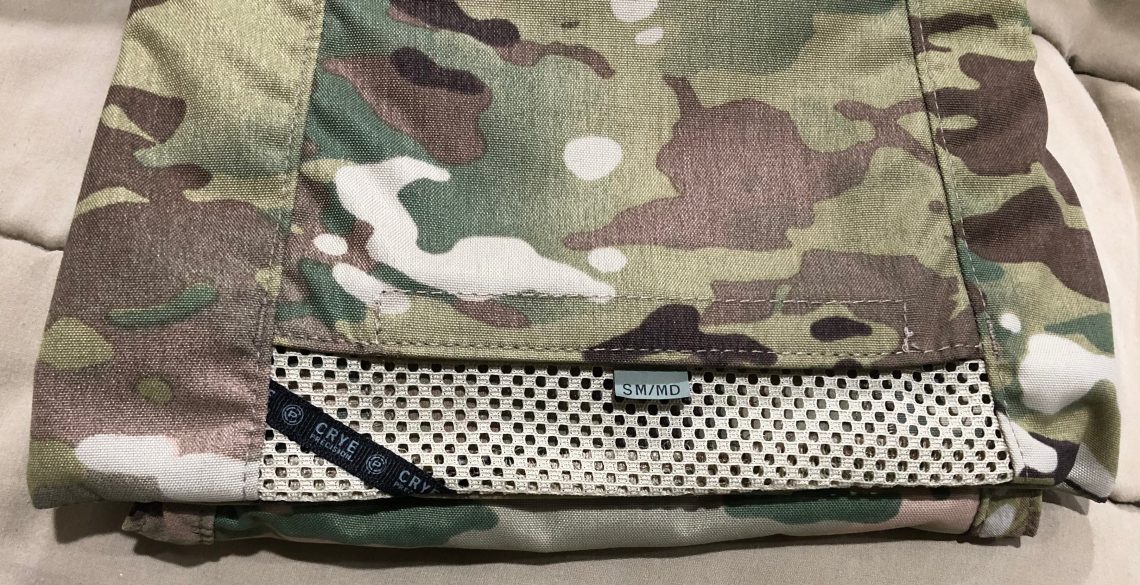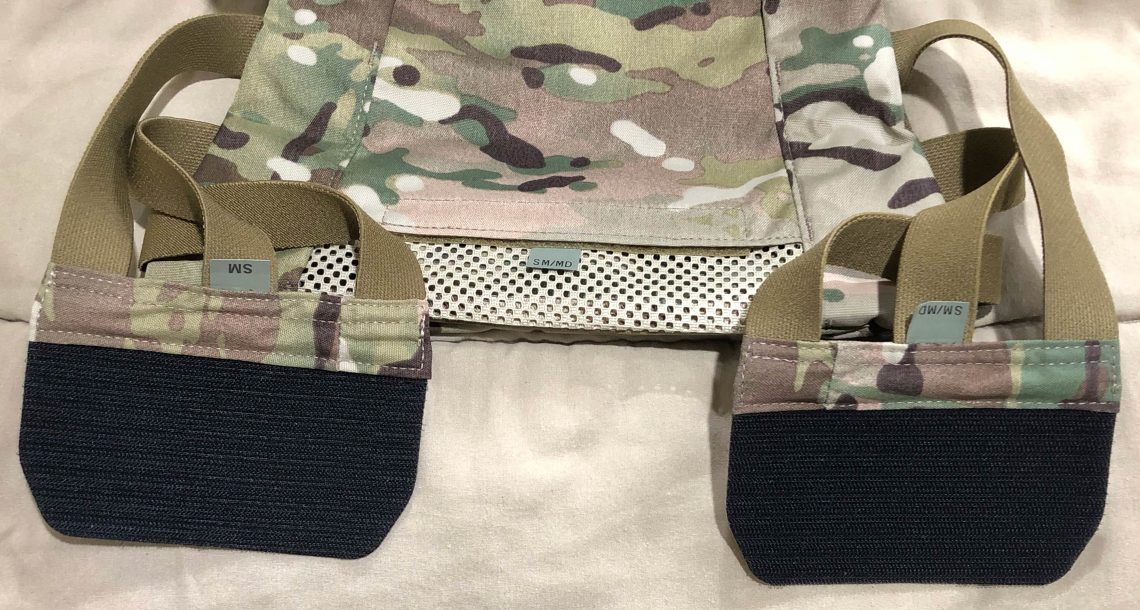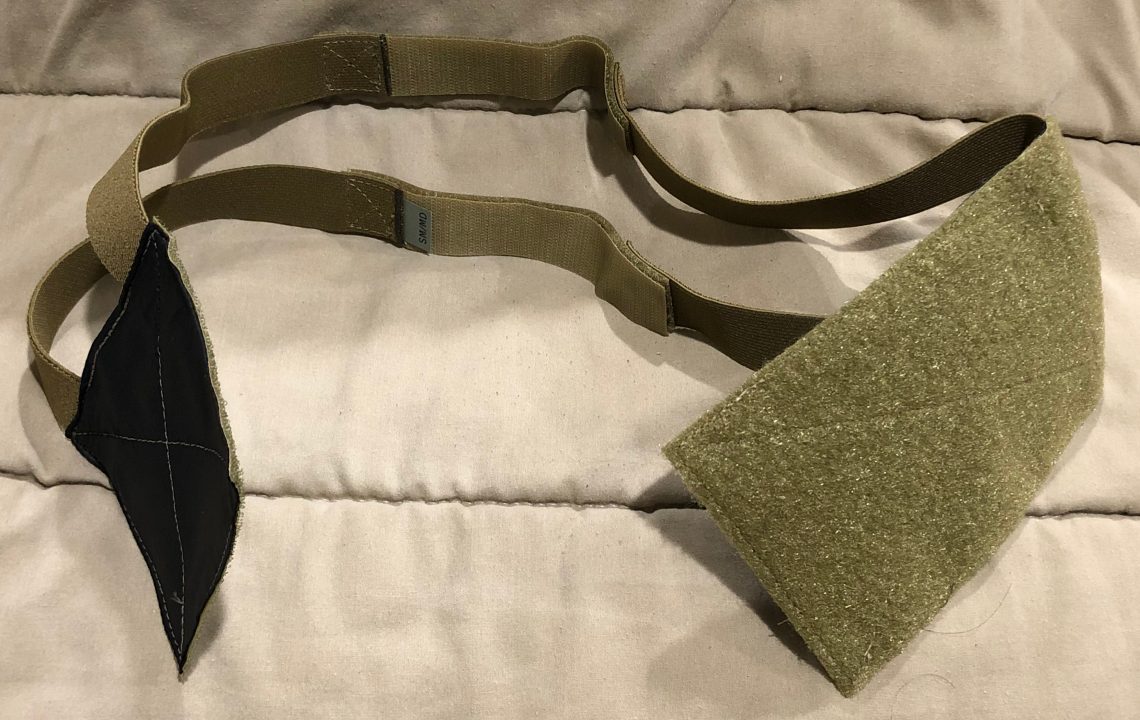The LV MBAV (LV = low-visibility, MBAV = Modular Body Armor Vest, a type of soft armor [1]) is a slick plate carrier made by Crye Precision. The carrier heavily uses Tweave 520E Durastretch material for the plate covers, 500D cordura for the sections requiring reinforcement, and Hypalon for the shoulder straps and cummerbund front section. The result is a lightweight, scalable plate carrier that can be tailored for a variety of missions from overt direct action to covert plainclothes operations. The LV MBAV’s most famous users include MARSOC/Marine Raiders (Khaki color)[2] and Army Special Forces and Rangers (Multicam)[3]. More users may come to light given that this carrier is still being used at the present (2020).
Sample 1: Khaki Color
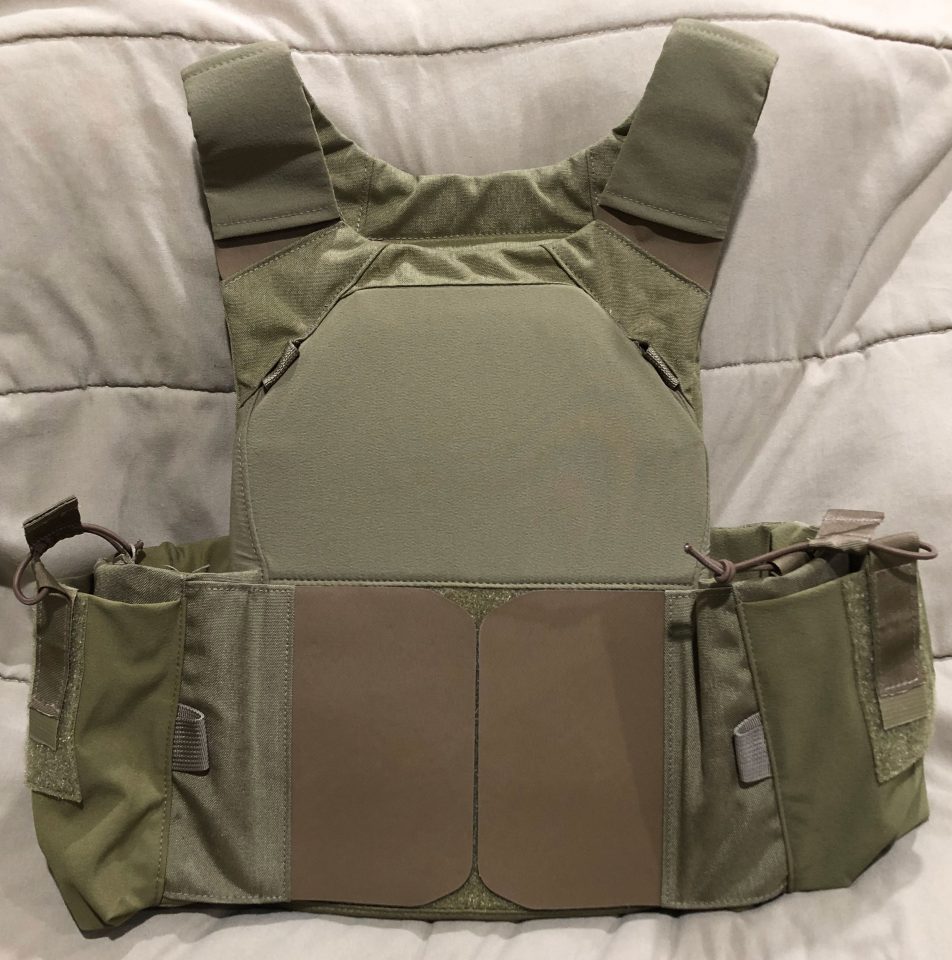
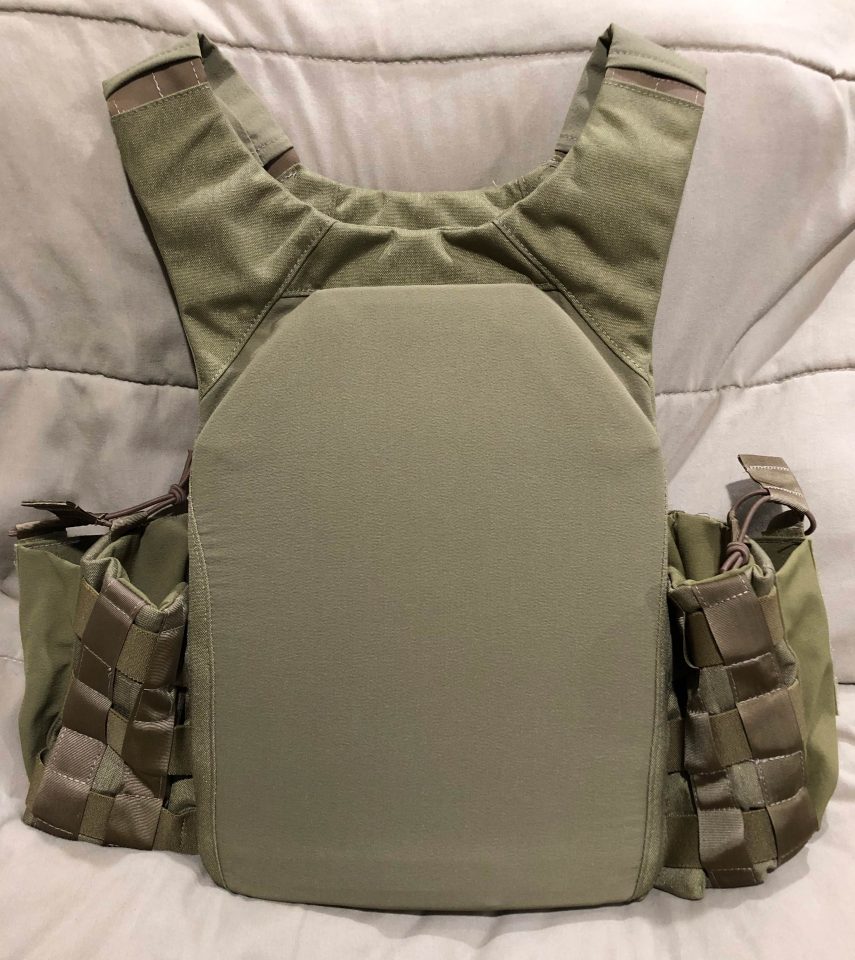
The small/medium size LV MBAV is unique in that there are actually 2 different sizes of platebag, one for each size. The shoulder straps can be adjusted for height using velcro on the straps and platebags:
Soft Armor Compartment:
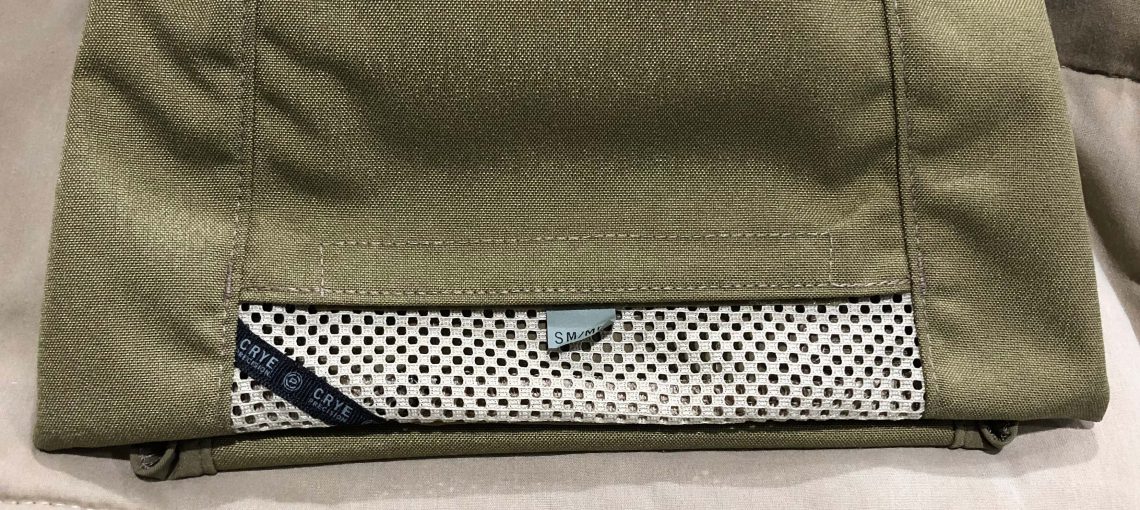

The MBAV soft armor has its own compartment that is under the plates, closer to the wearer’s body.
Front Plate Bag:
Rear Plate Bag:
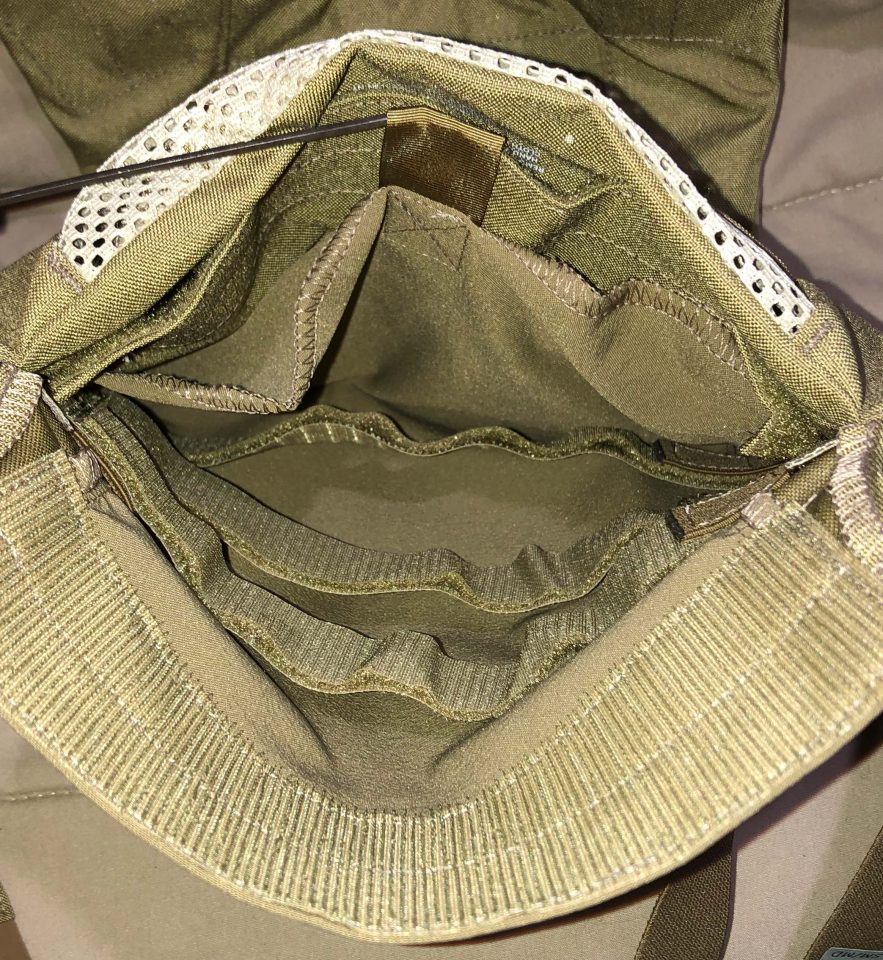

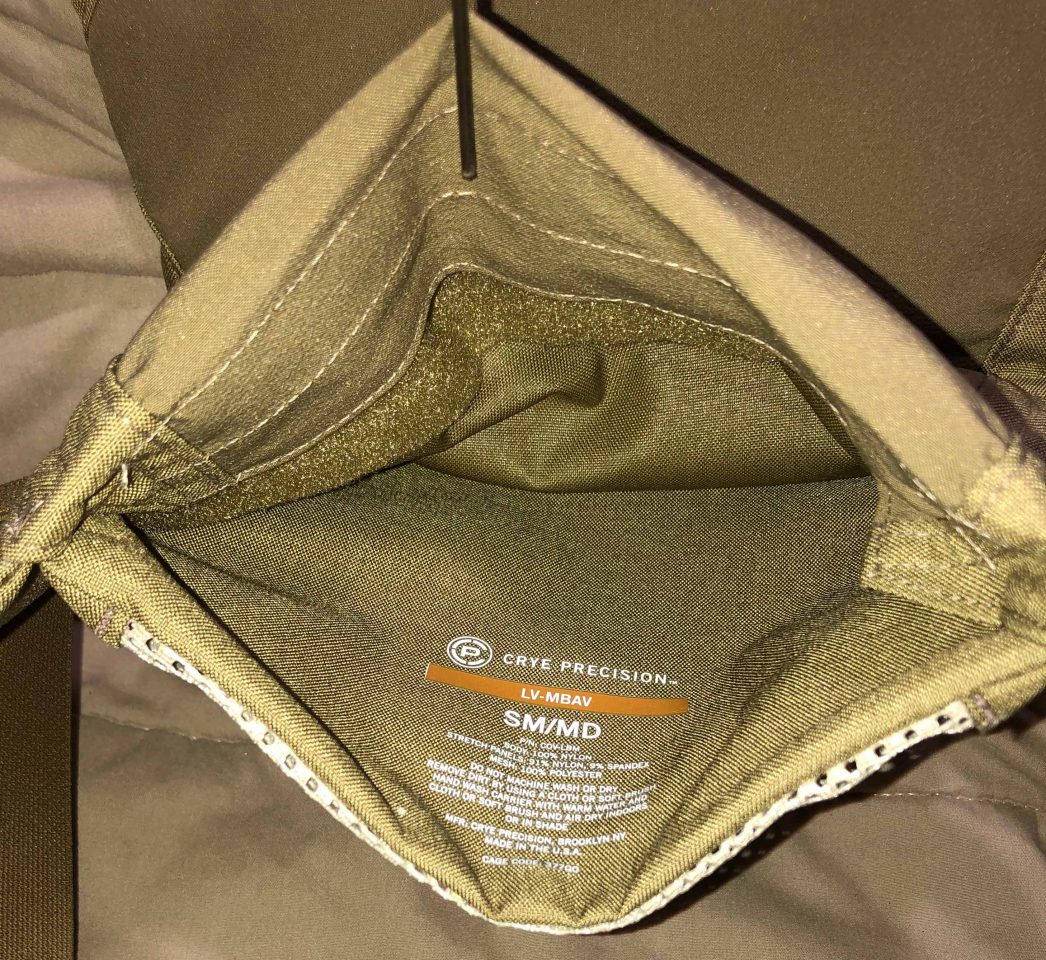
Three-Band Cummerbund:
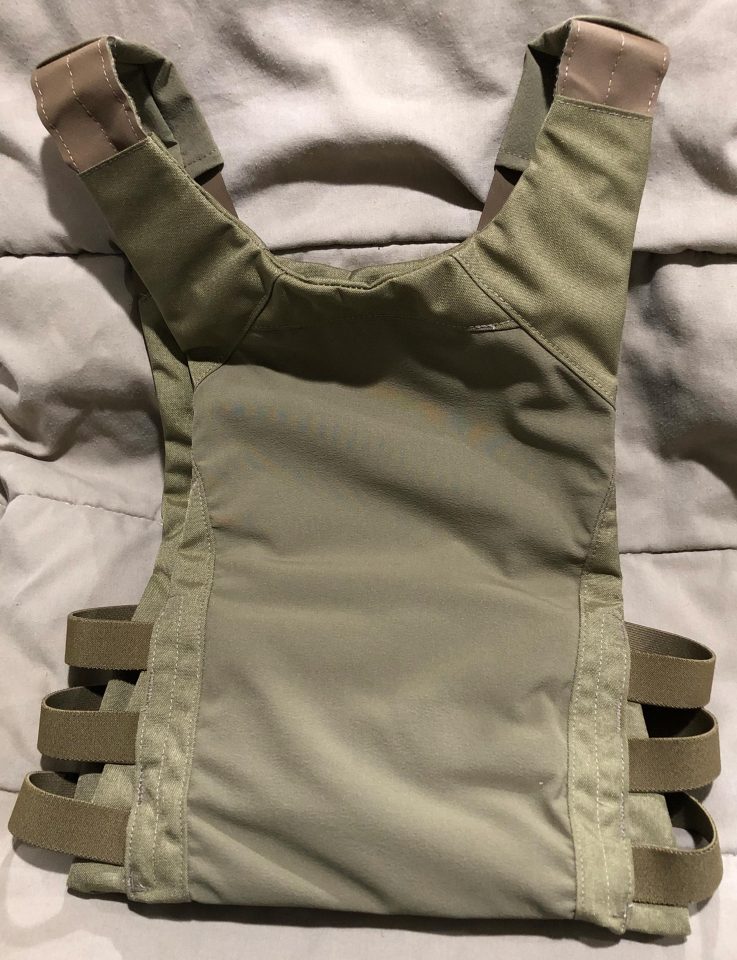
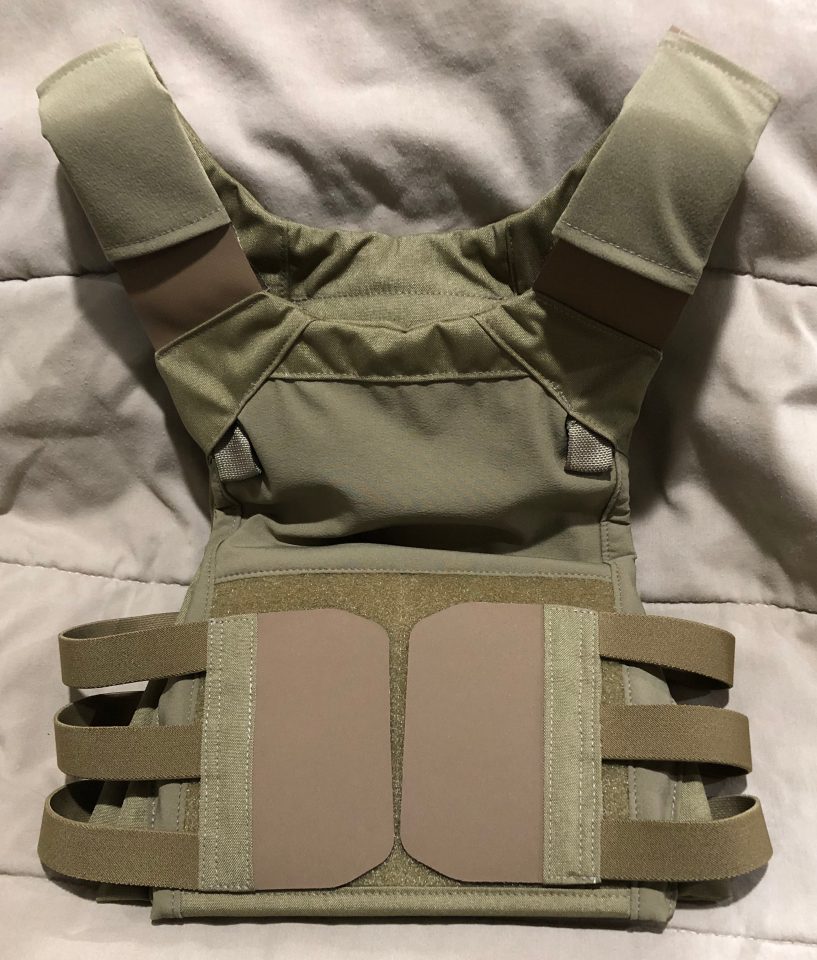
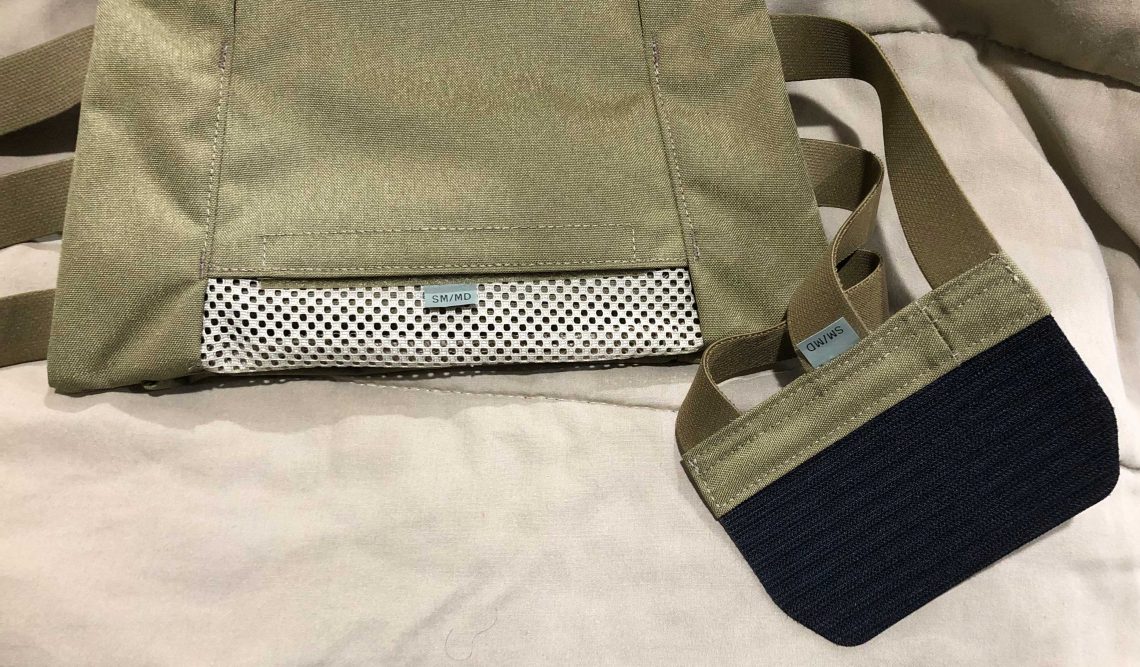
The three side straps are elastic and size-adjustable inside the rear plate bag. This is the cummerbund that is attached to the platebags while they are in the packaging.
Single Point Cummerbund:
Internal Cummerbund:
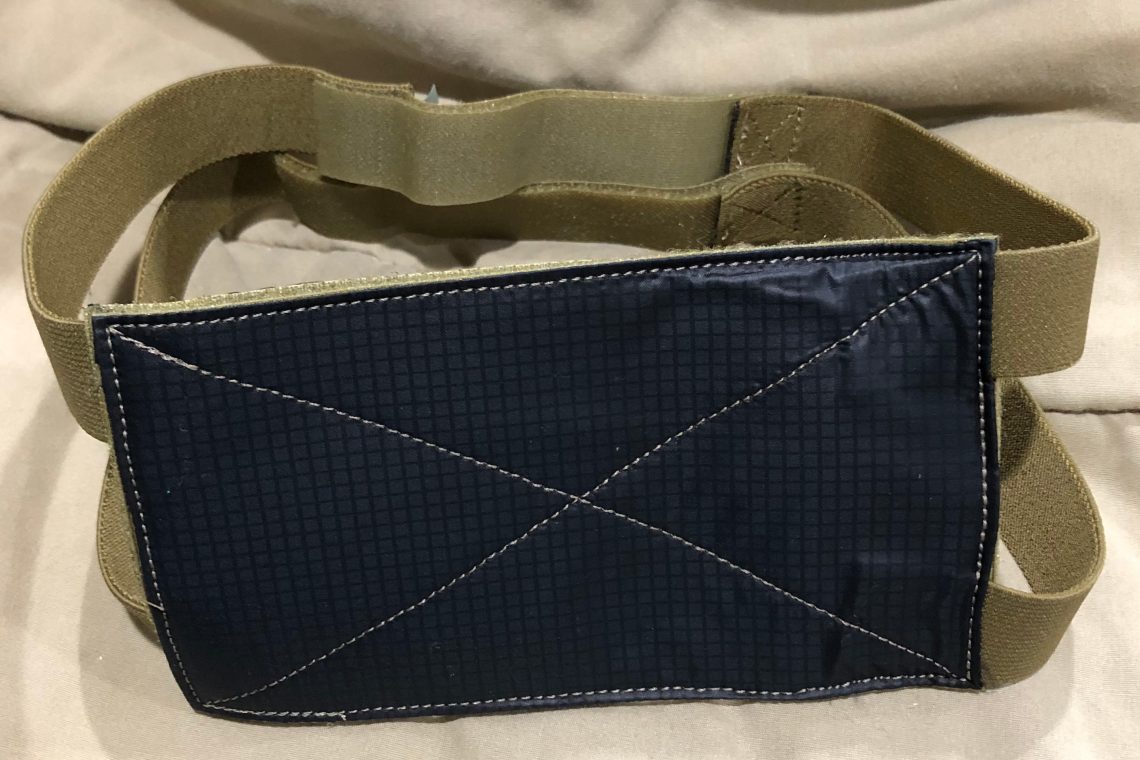
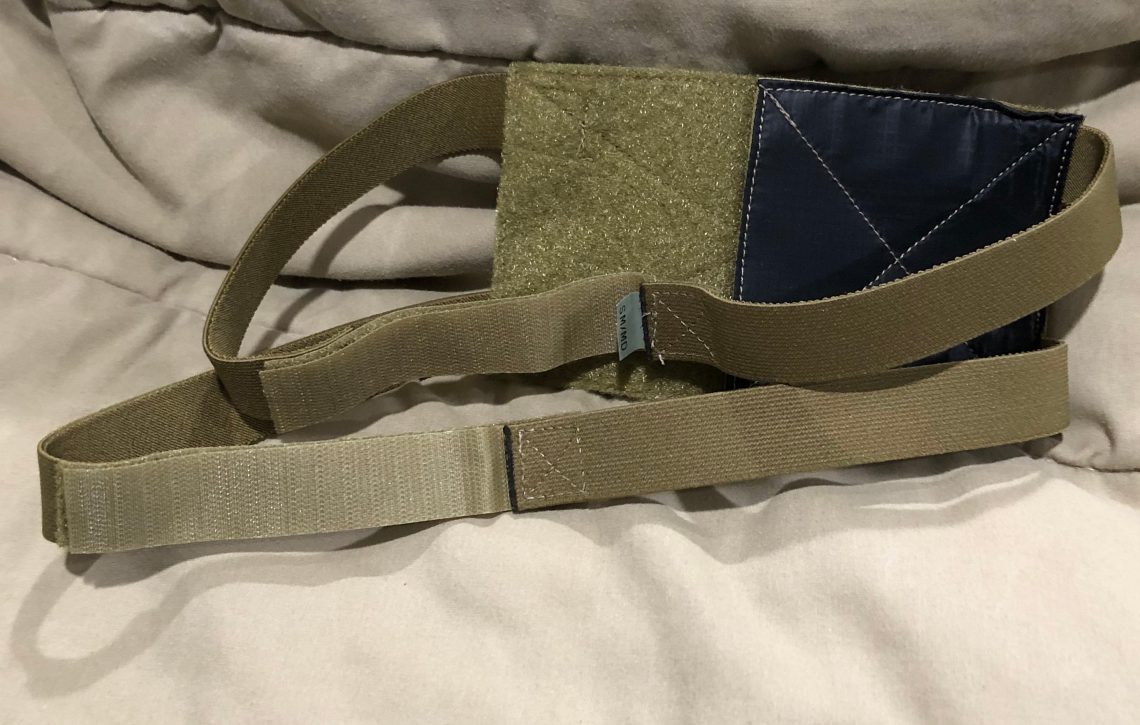
Radio Cummerbund:

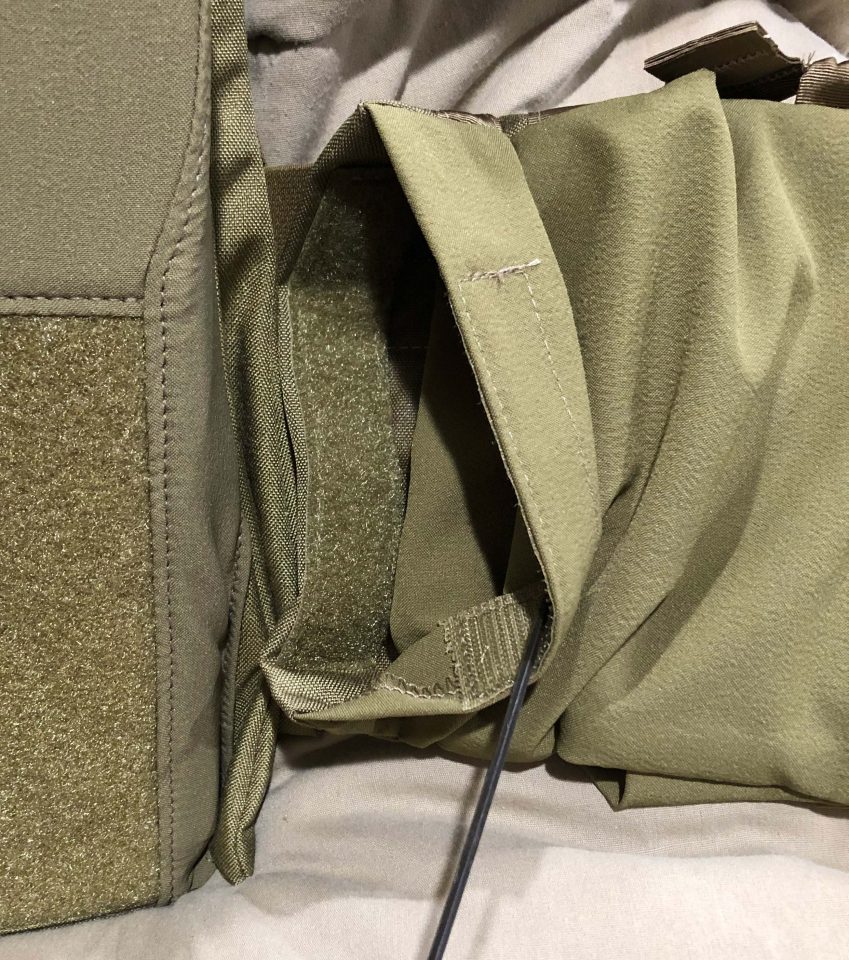
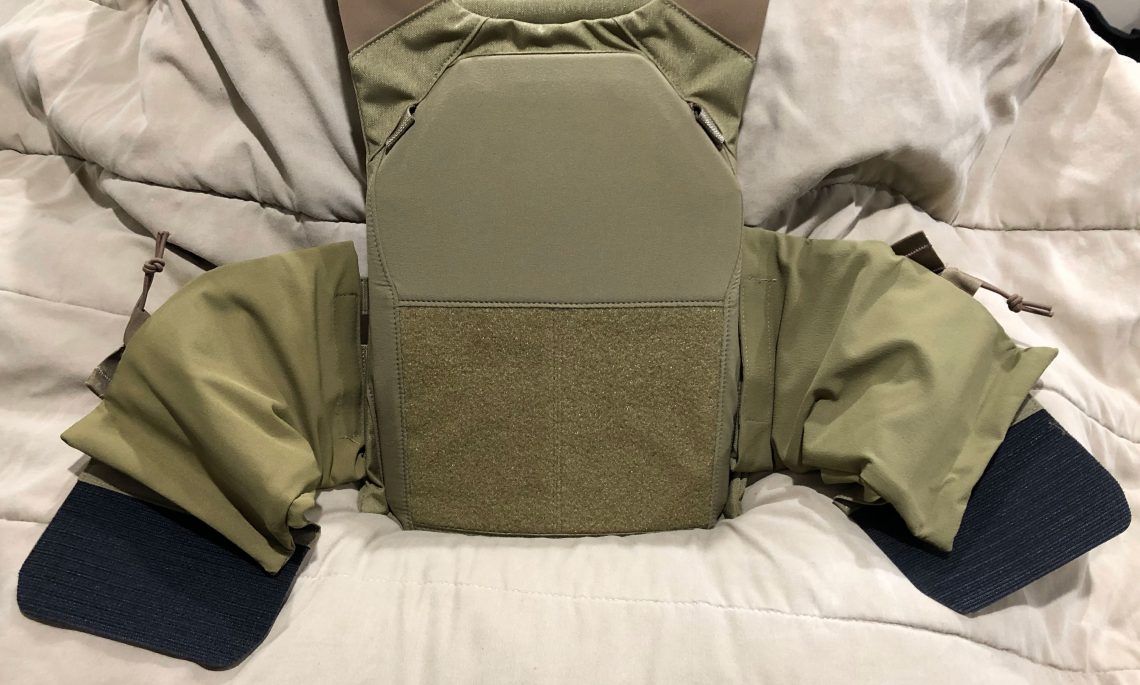
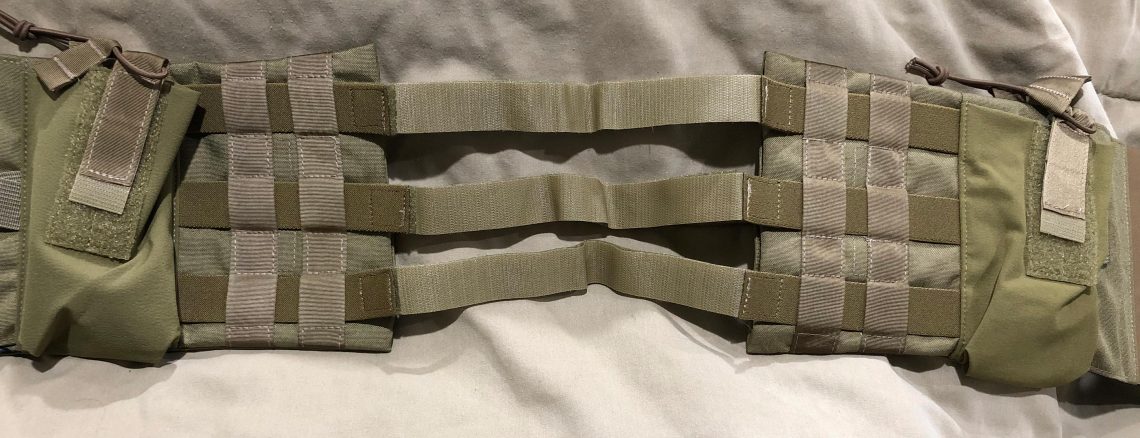
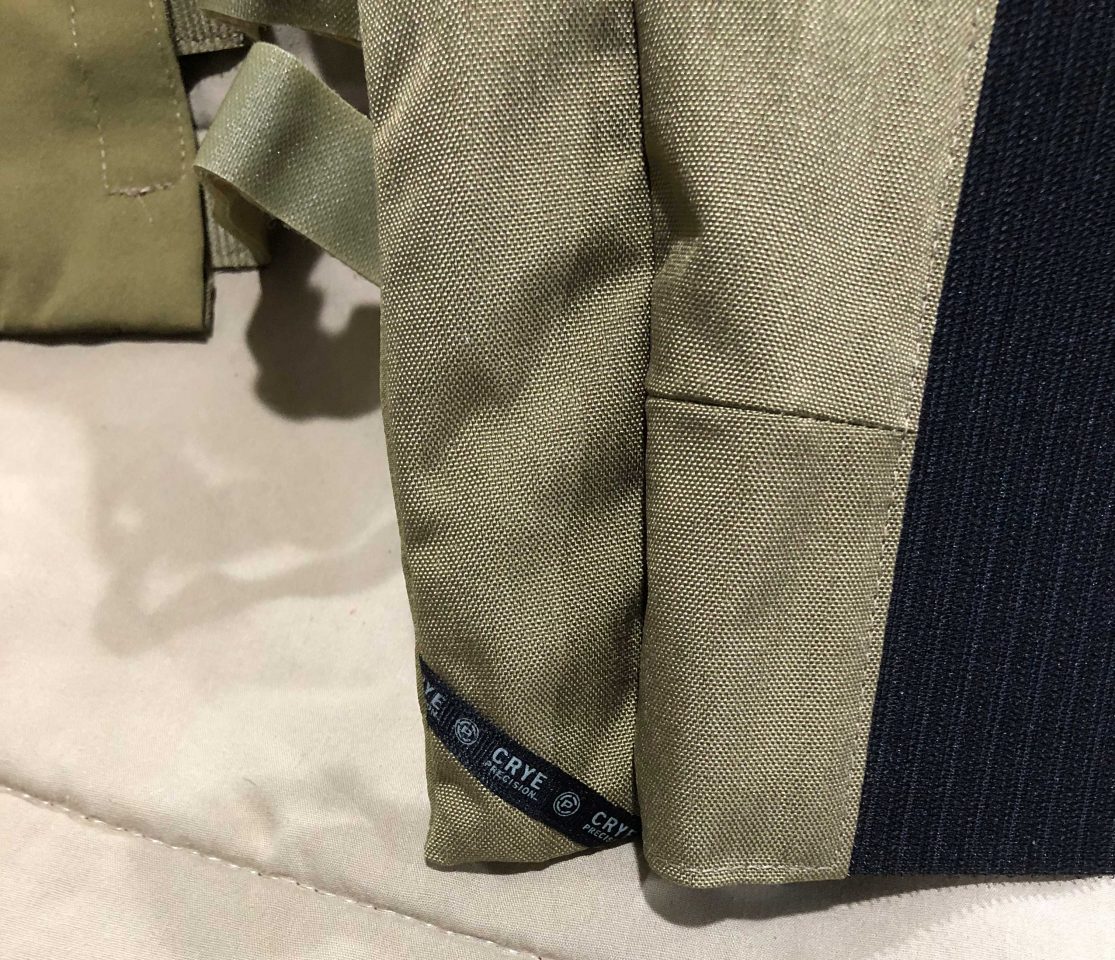
This is the cummerbund most often seen in use photos. Except for the front platebag attachment flaps, which are hypalon like the skeletal cummerbund, the wings and radio pocket are made from the same 520E Tweave used in the rest of the carrier.
Packaging:
The plate carrier and radio cummerbund come from Crye Precision in sealed plastic wrapping. Both bags contain the same small usage instructions pamphlet.
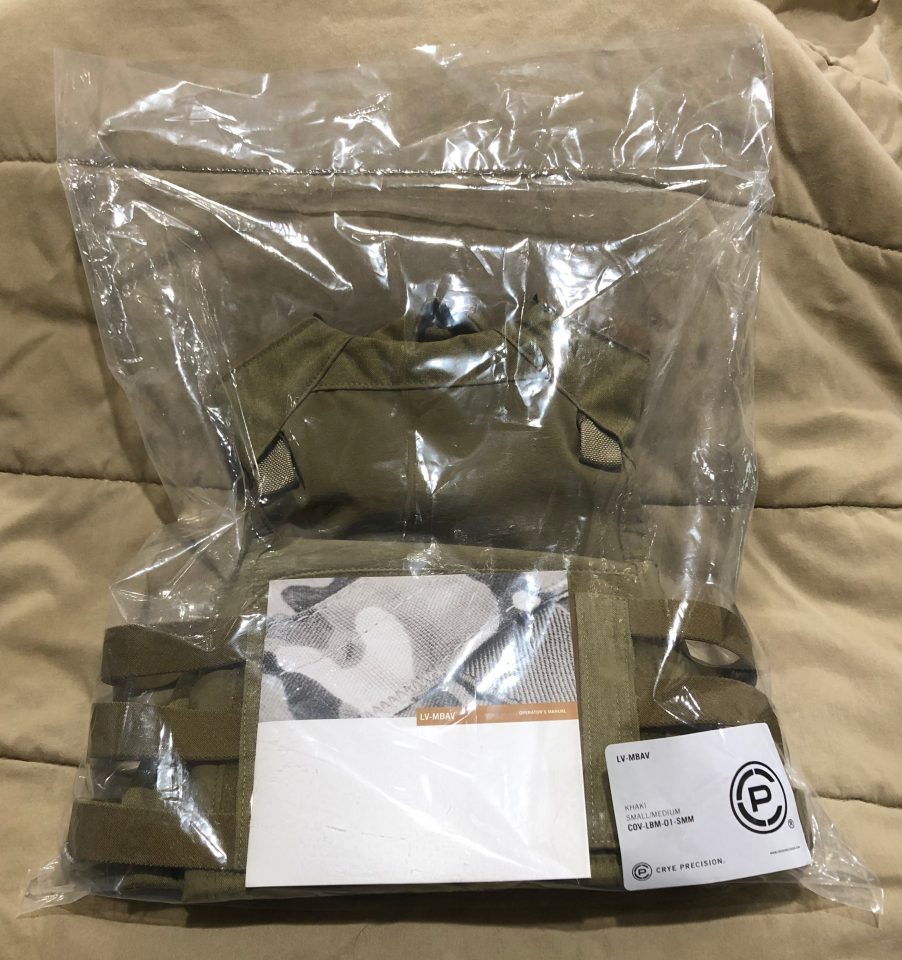
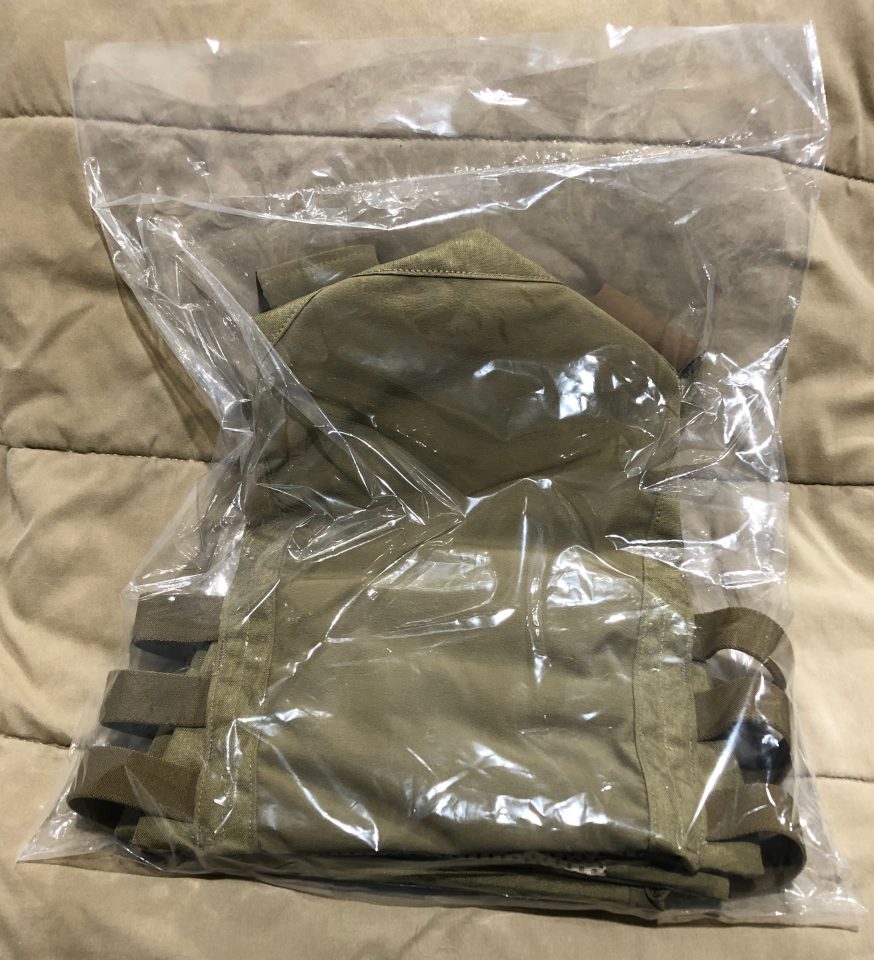
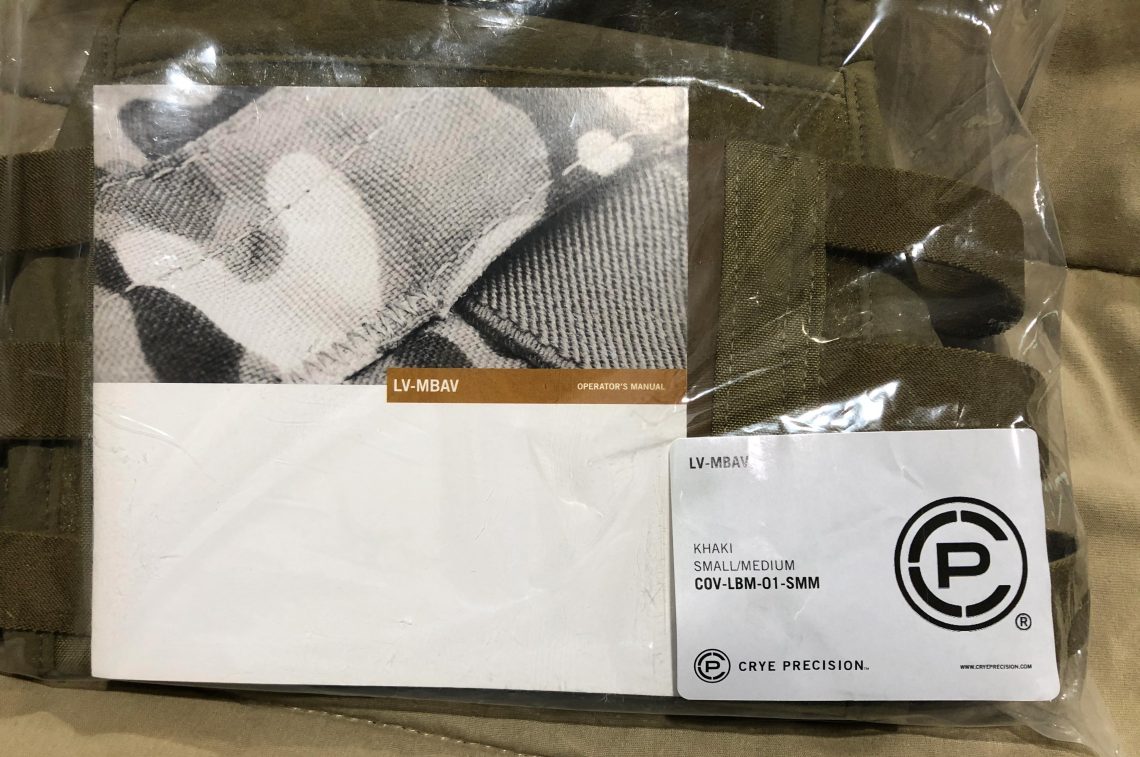
The plate carrier package contains the plate bags (already assembled with the skeletal cummerbund), a low profile cummerbund, and an internal cummerbund.
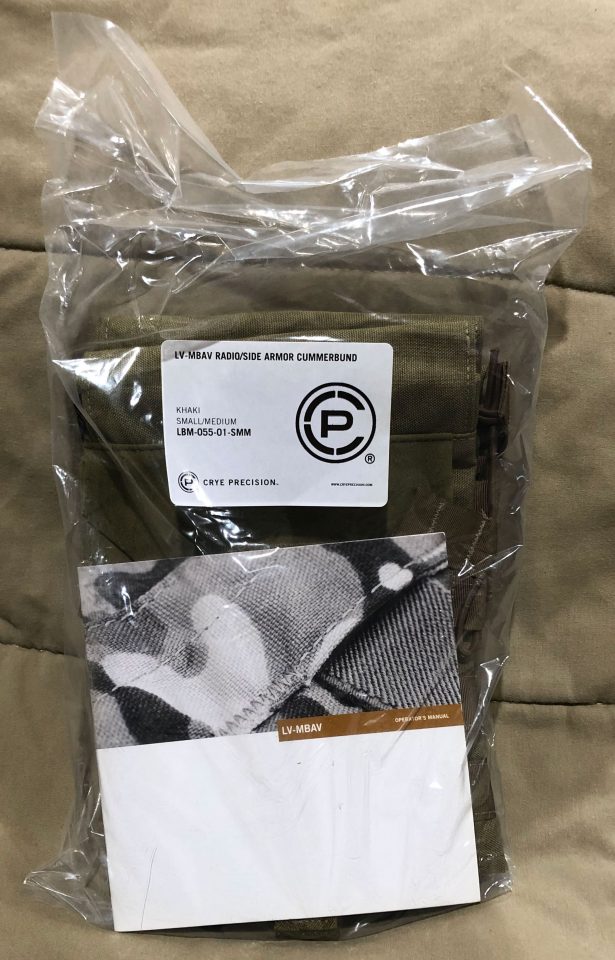
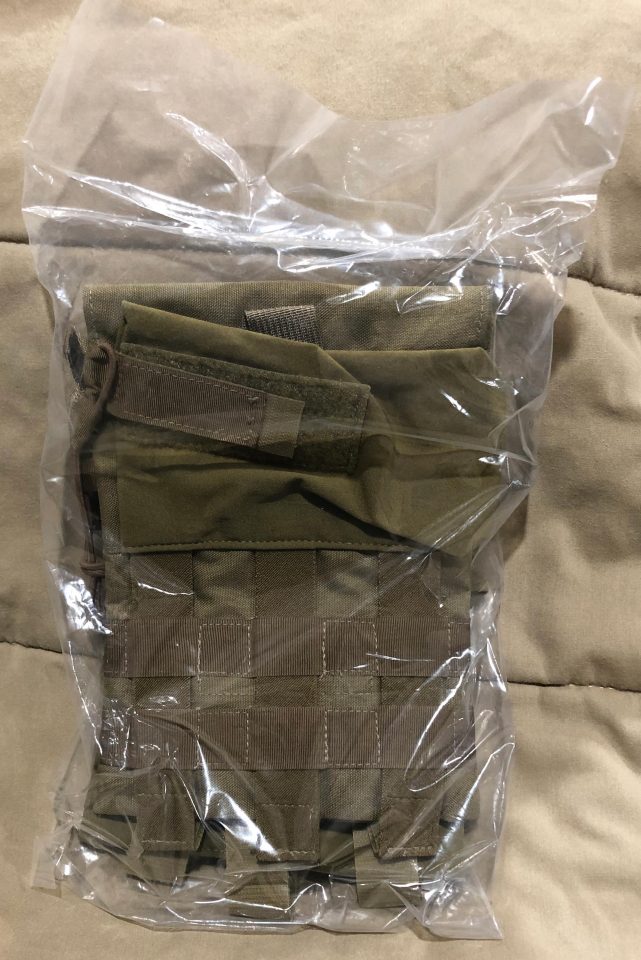
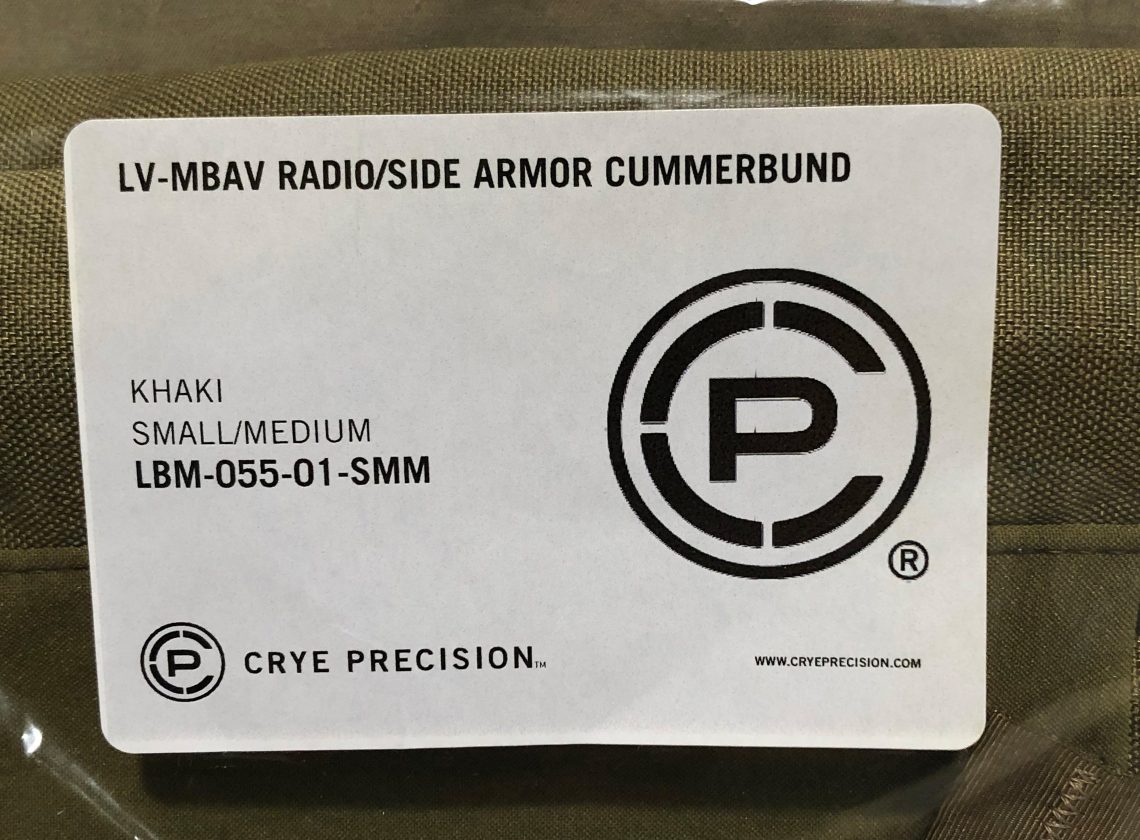
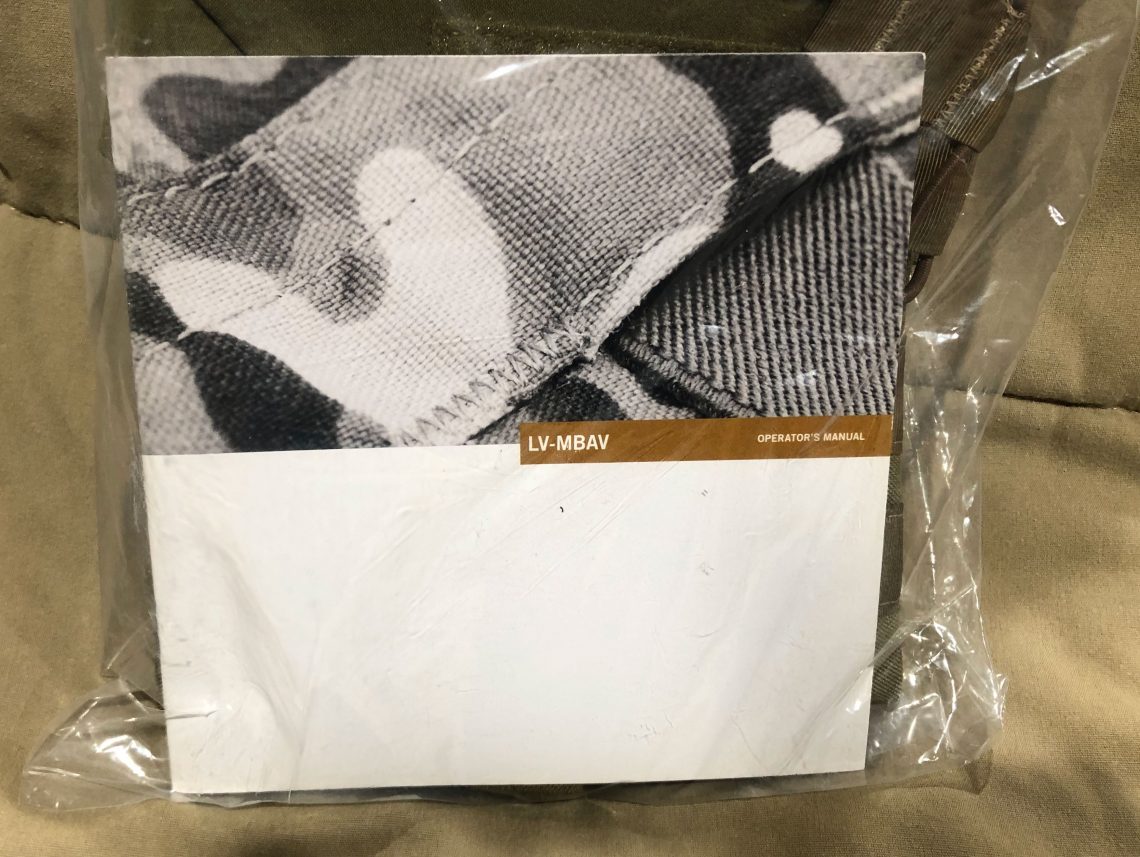
The radio cummerbund comes packaged separately.
Differences between Gen 1 and 2:
Definite existence of a Gen 1 and 2 is an unconfirmed fact. This information is provided tentatively pending verification since the terminology has been increasingly used (as of 2020) in discussions of this plate carrier.
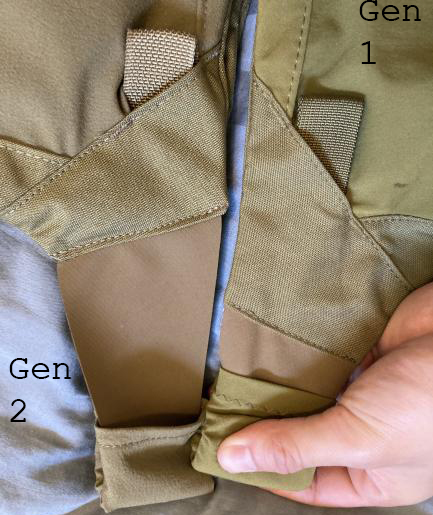

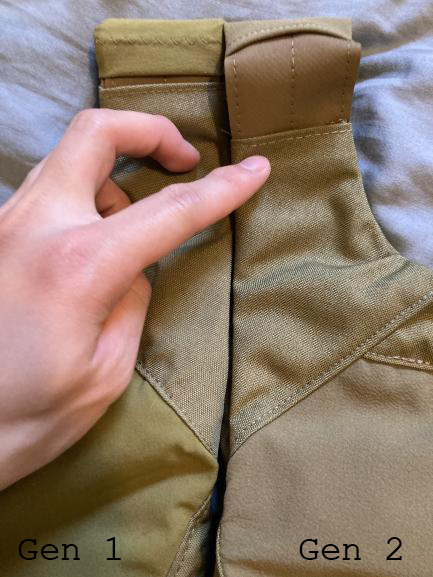

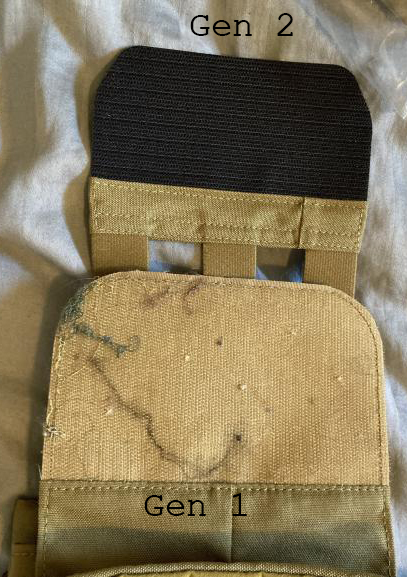
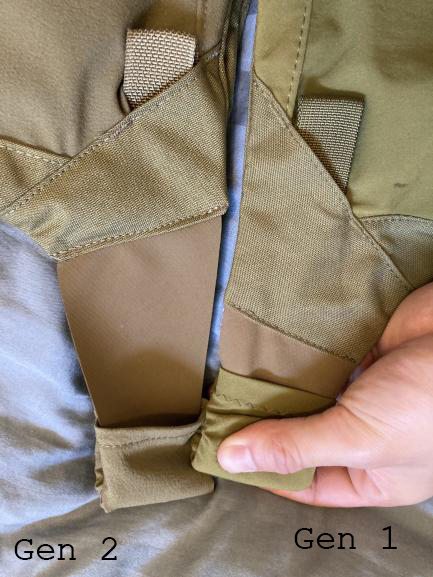

The Gen 2 Tweave material appears to be thicker and the shoulder adjustments and the inside of the plate bags are slightly different between Gens 1 and 2.
Sample 1 on this page appears to be a Gen 2 example. The transition from Gen 1 to 2 must have occurred early during production since some use images show Gen 2 examples.
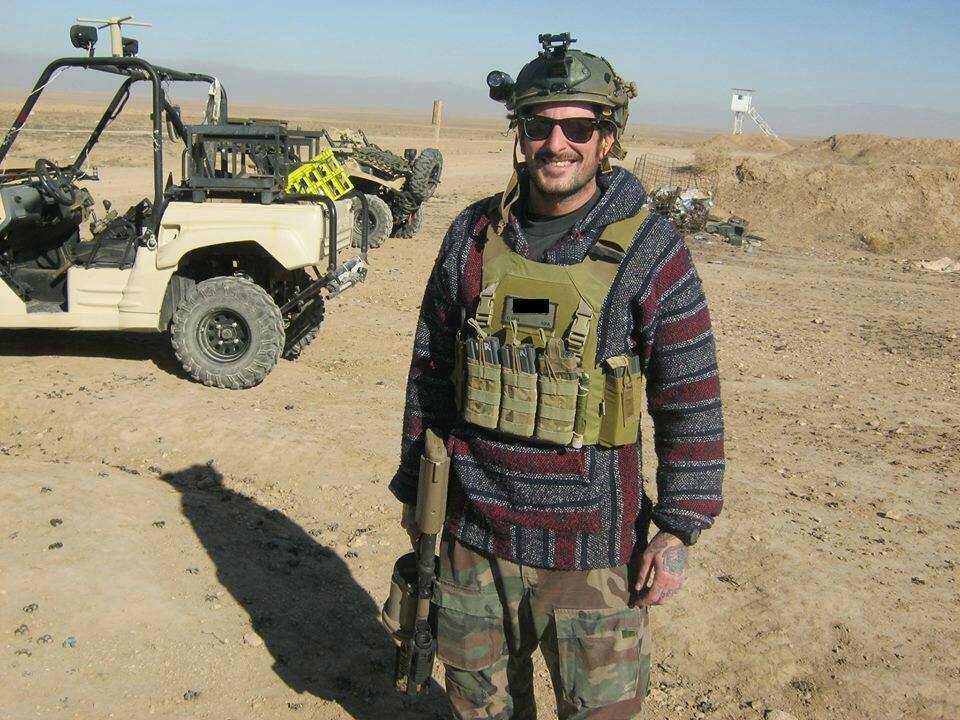
More info about the Mobile Technology Repair Complex (MTRC): https://ndiastorage.blob.core.usgovcloudapi.net/ndia/2010/specialmissions/2_Shepherdmod.pdf
http://www.marineea.org/hotjobs/job/special-operation-forces-technician-sof-tech-poc-in-listing/
https://www.defenseone.com/technology/2018/05/special-operations-forces-are-changing-combat-medicine-jury-rigged-hospitals-and-freeze-dried-blood/148522/ (note they use “Technical” instead of “Technology” for the MTRC abbreviation)
MTRC Manufacturer: https://skybridgetactical.com/skybridge-contracts/special-operation-forces-sof-mobile-technology-repair-complex
All information about Gen 1 vs 2 comes from Discord user (who wishes to remain anonymous) who contributed Gen 1 vs 2 comparison photos.
Chest Rig Mounting:
There are a pair of webbing loops on the front for QASM clips to attach a variety of chest rigs and placards, such as the Haley D3CR. These loops can be tucked away into their compartments under the shoulder strap.
Mounted chest rigs in use:

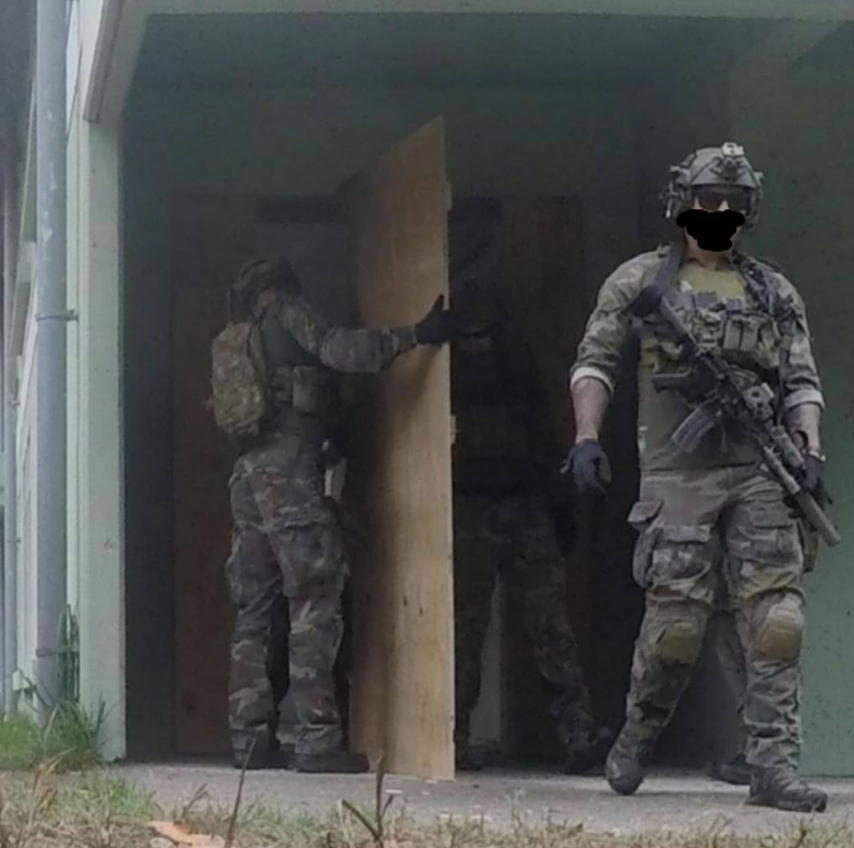

However, some users choose to simply wear the whole chest rig over the slick plate carrier using the chest rig’s separate harness.
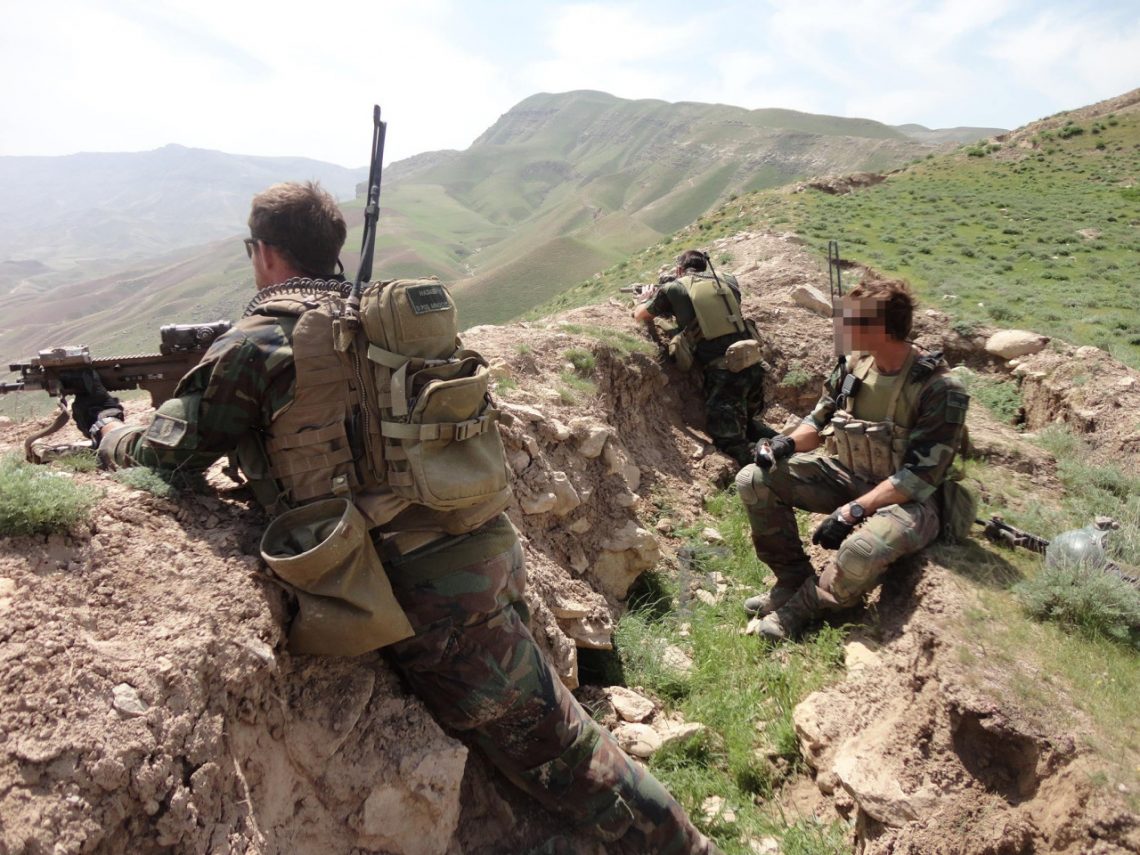
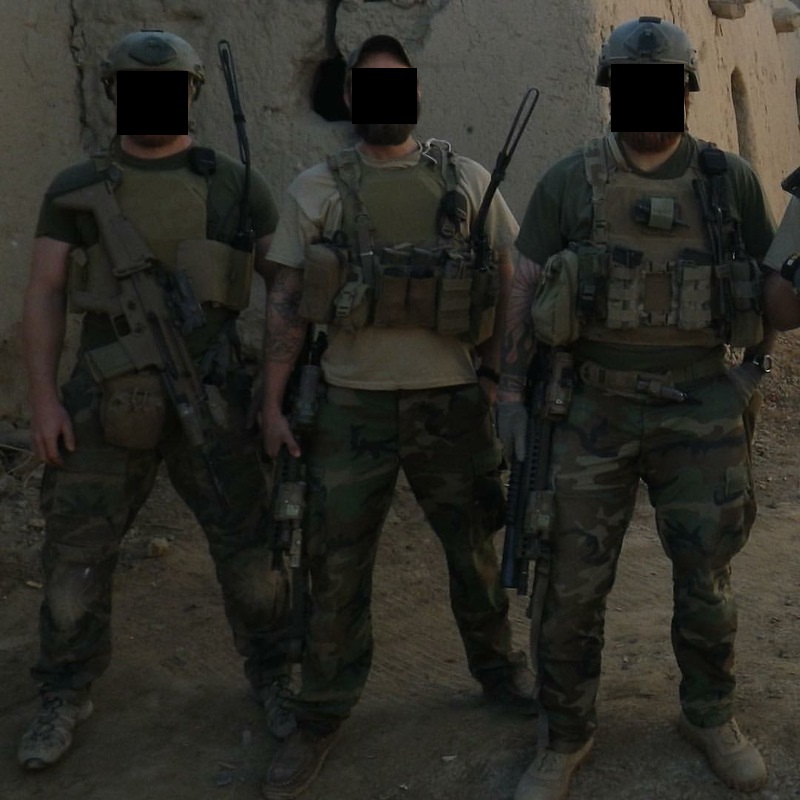
Sample 2: Multicam
Identical to Khaki example, but in Multicam.
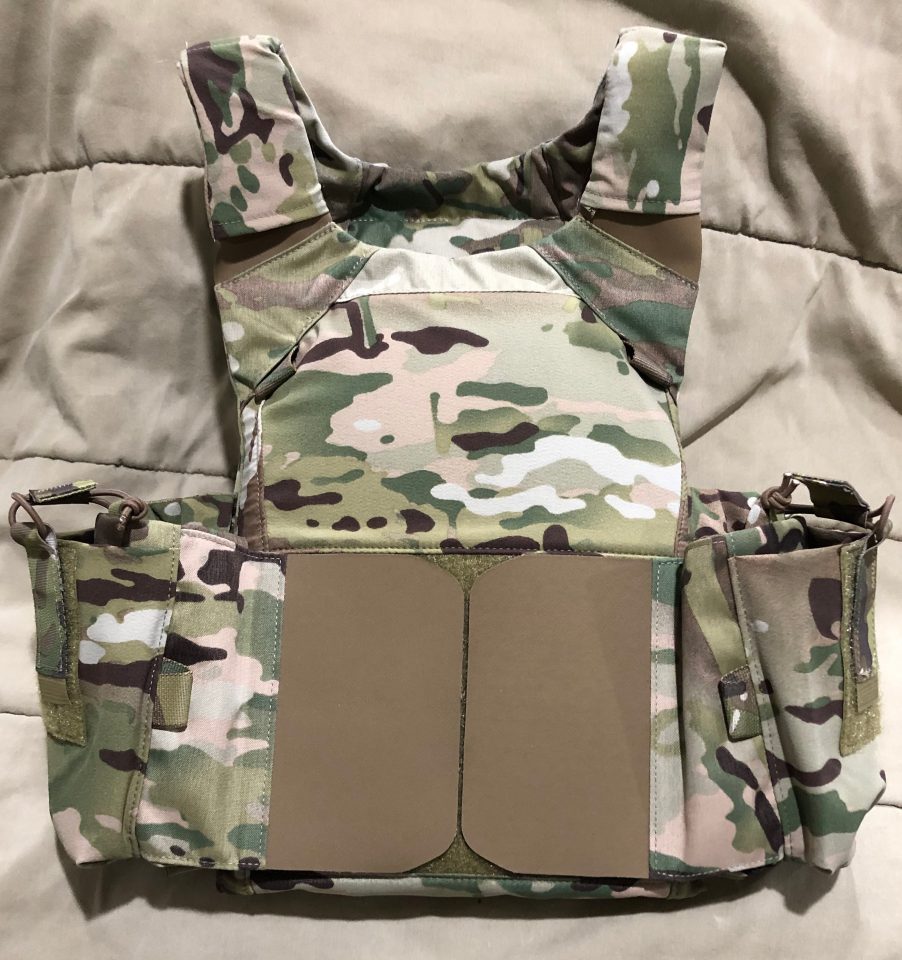


Rear plate bag has webbing reinforcement for cummerbund strap entry holes. This is also present on the khaki example.
The plate bags’ internals are identical to the khaki example.
Packaging:
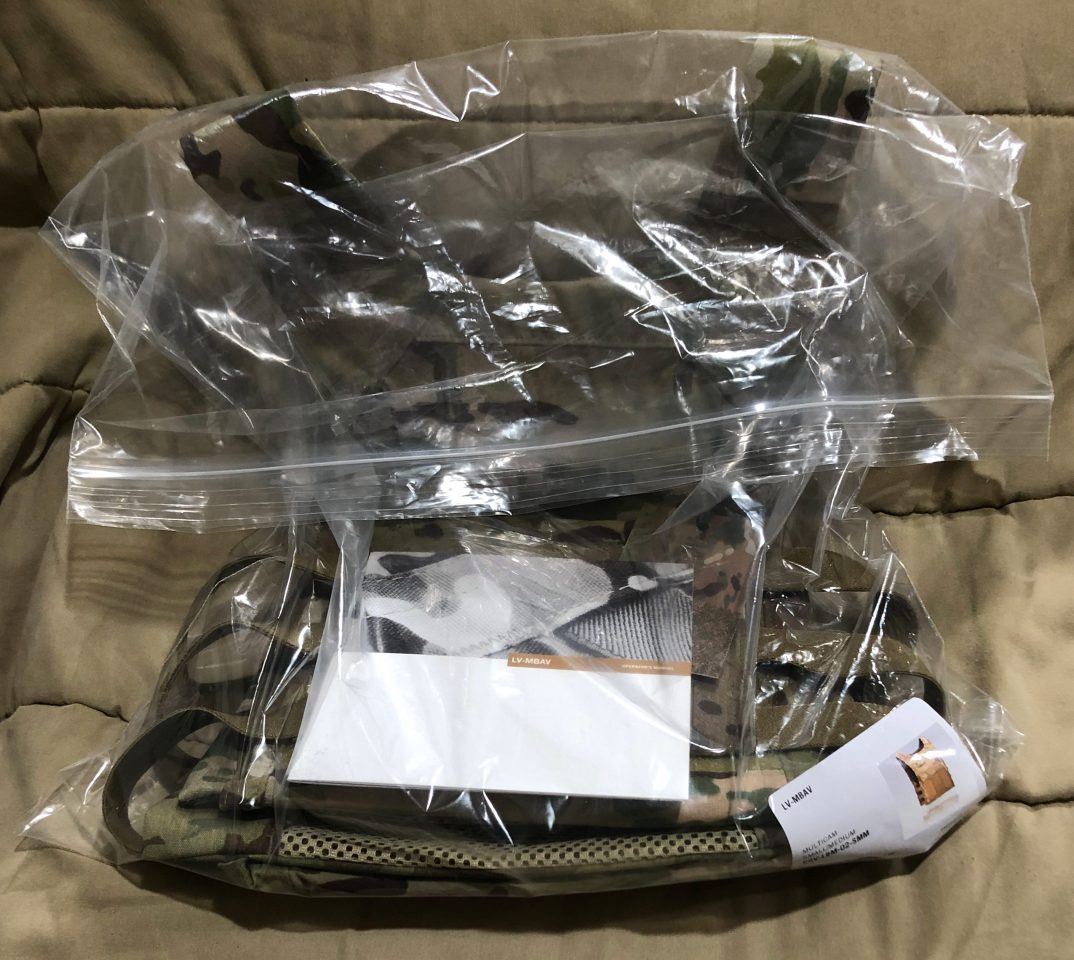
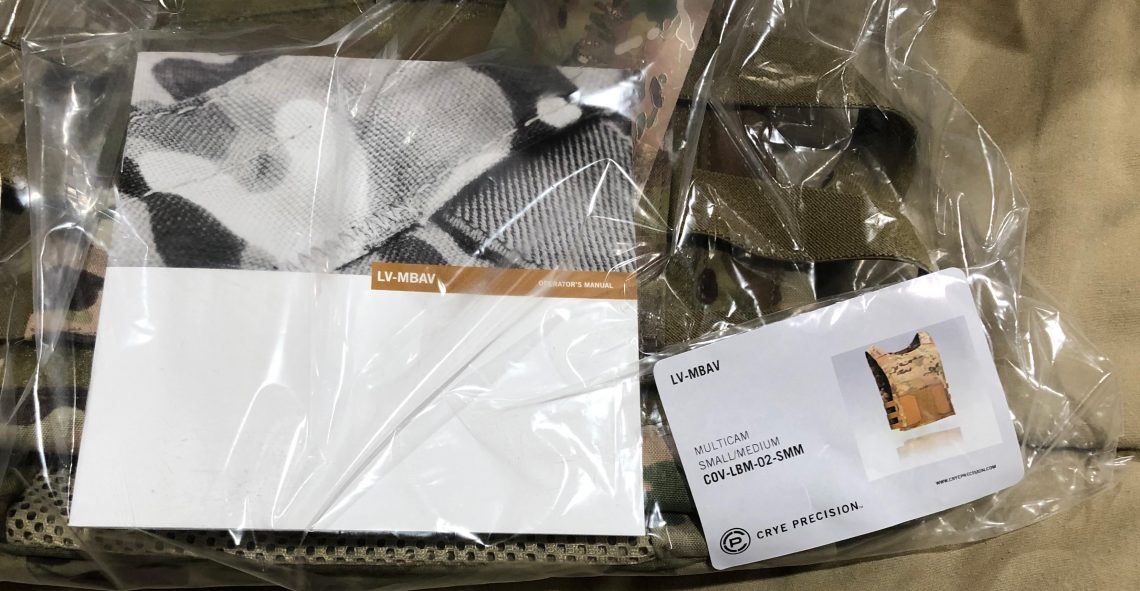
The plate carrier comes in a ziploc bag with the same components as the Khaki example. The information pamphlet is the same as the khaki example. It comes with the three-point cummerbund already attached. The smaller cummerbunds (internal and single point) are inside a smaller ziploc bag and arrive inside the front plate bag, also like the khaki example.

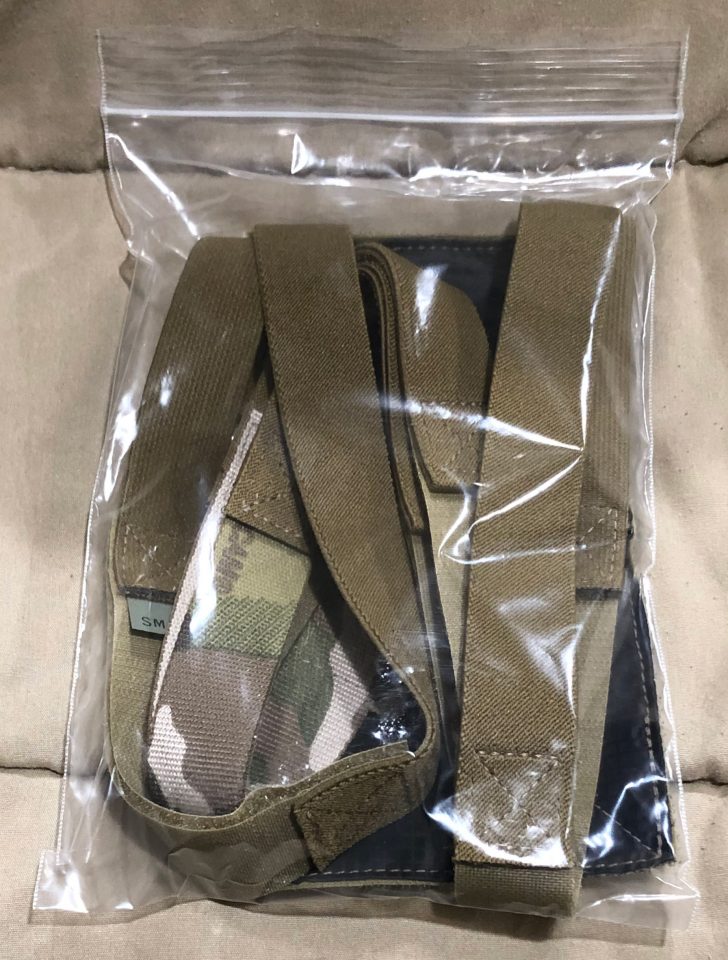
The radio cummerbund comes in a non-ziploc plastic bag.
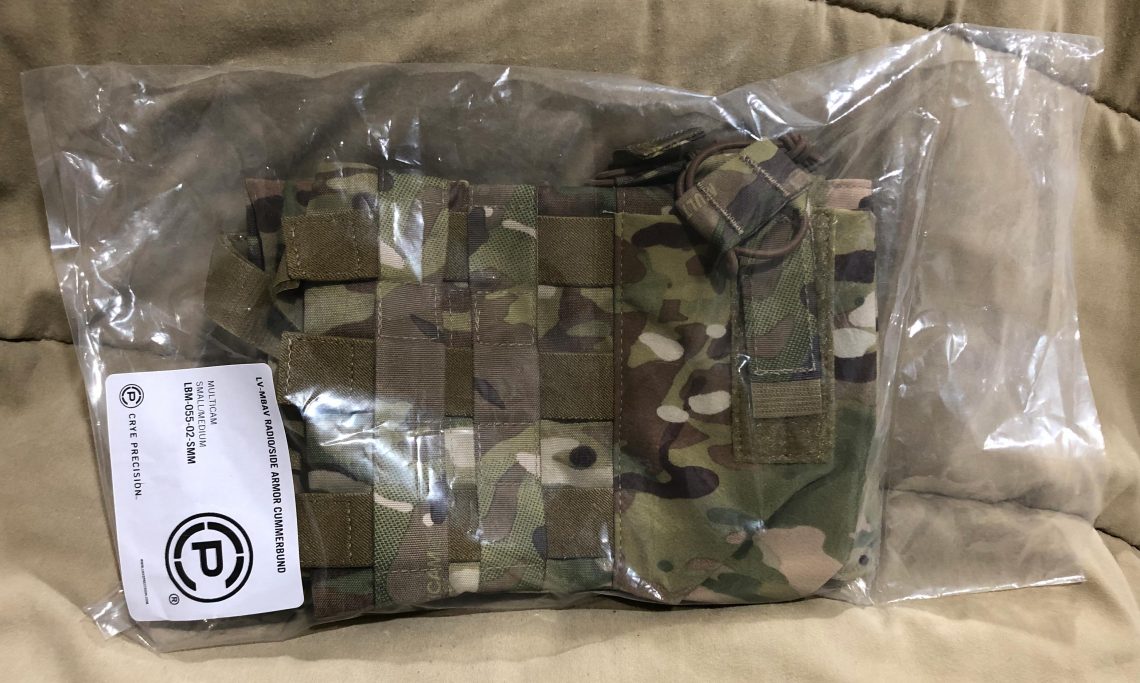
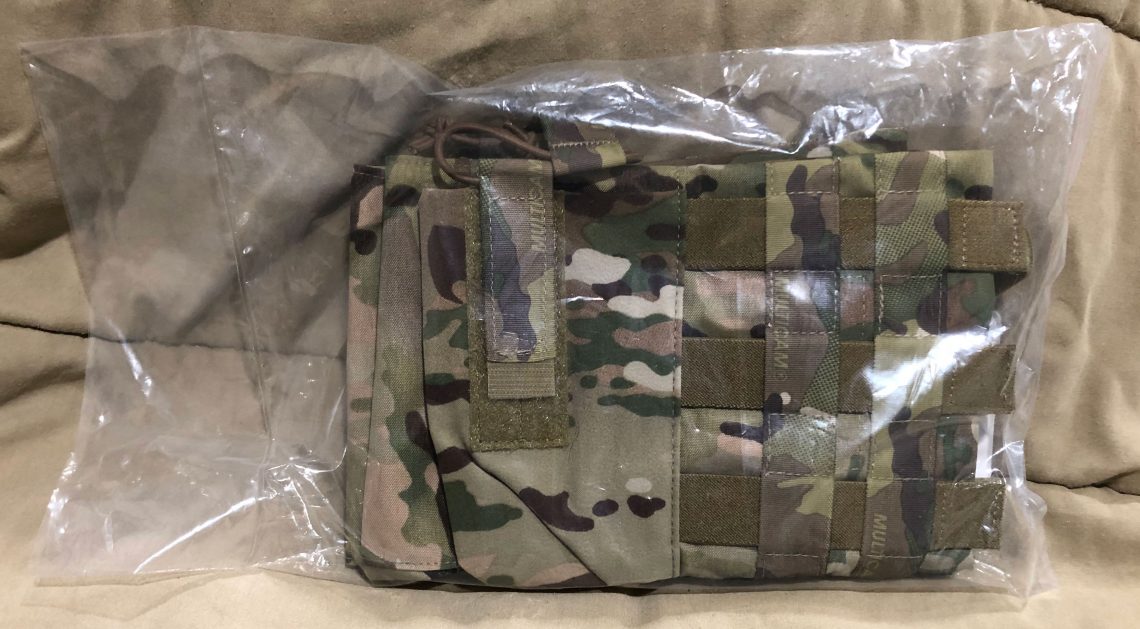
Three-Point Cummerbund:
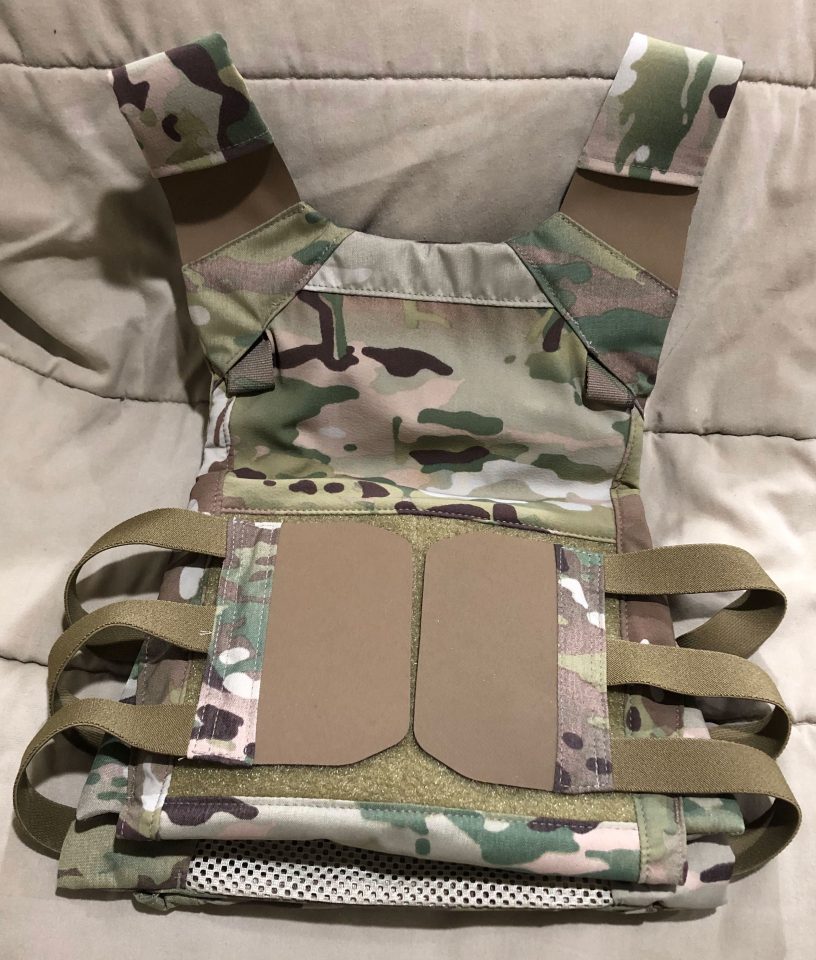
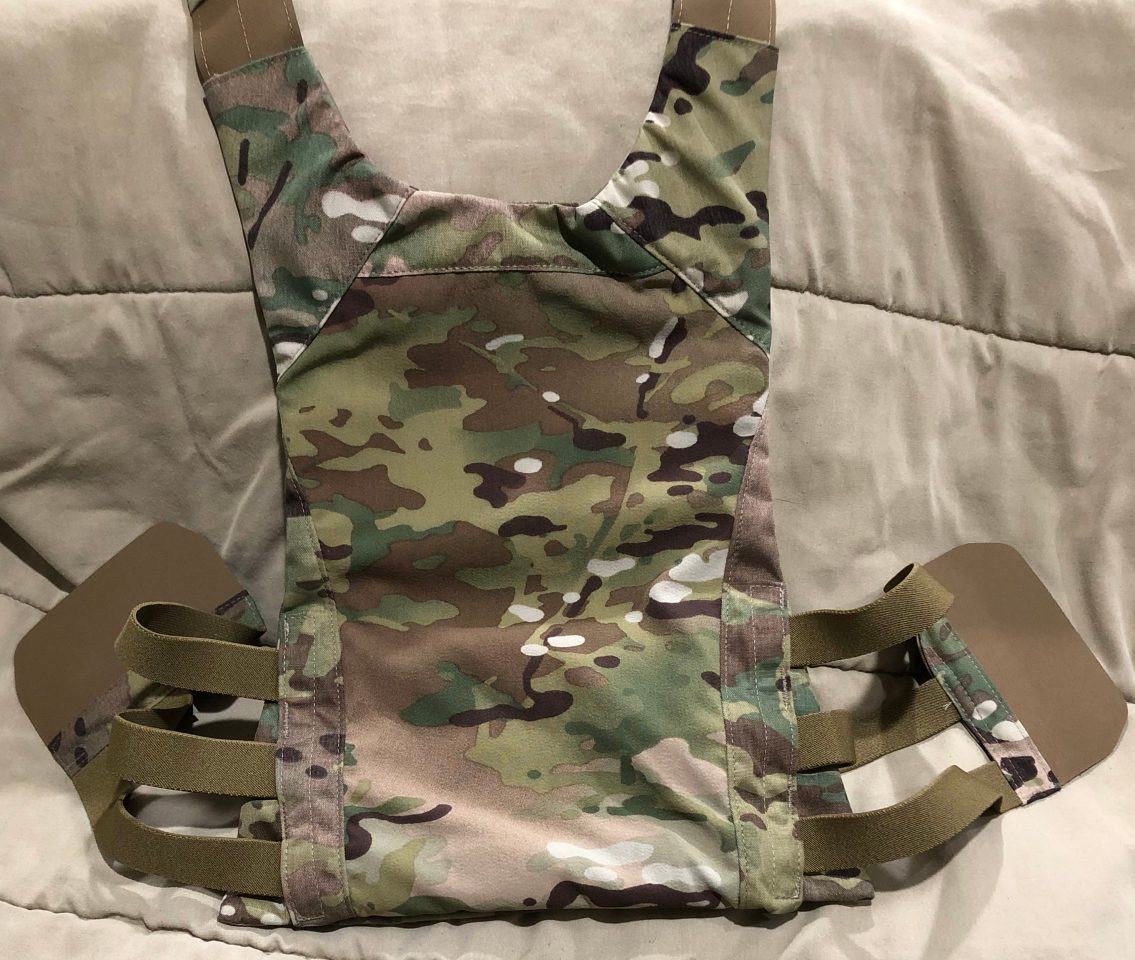
Three-point cummerbund’s size tags are mismatched:
Plate Carrier has a Multicam hang tag attached to the left QASM webbing loop. The tag contains information about the various climate-specific multicam variations (Arid, Tropic, Alpine), which is expected since this example was produced in 2020 after they were created.

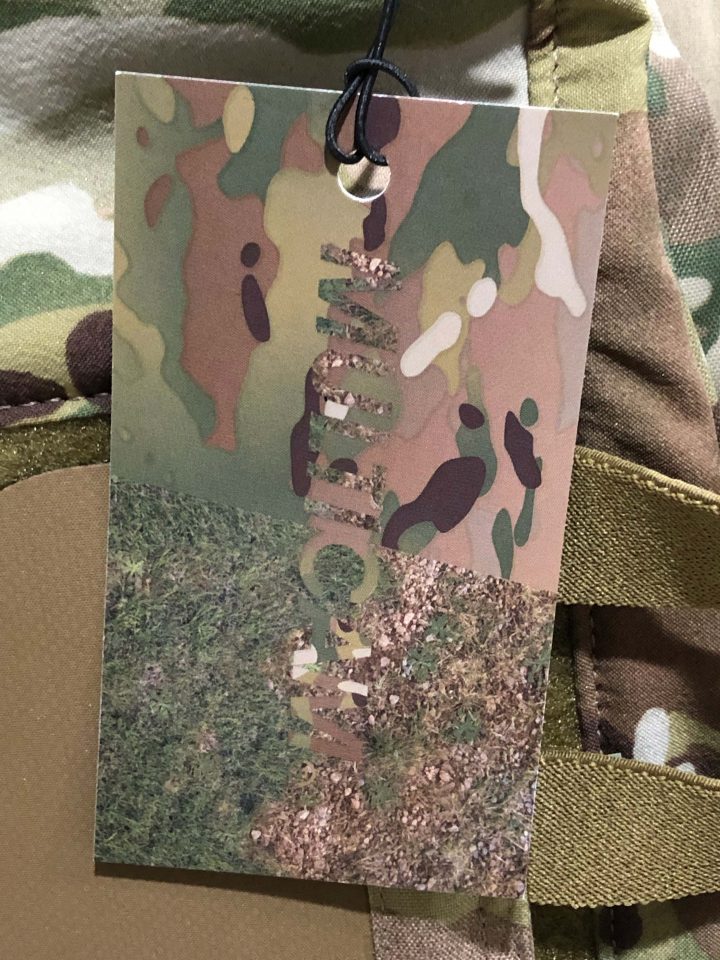
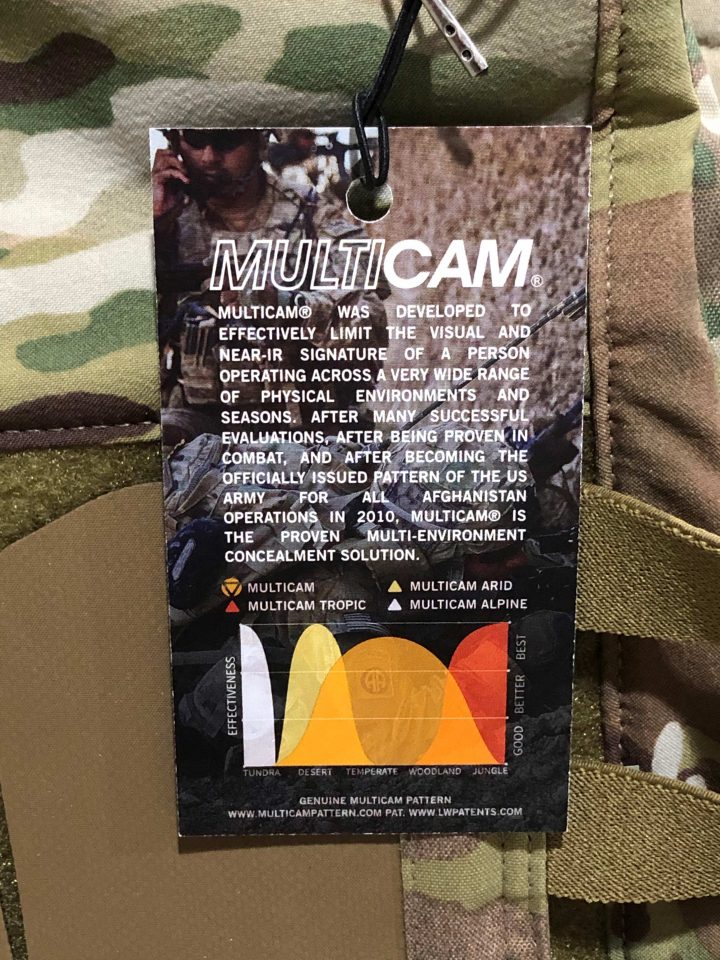
Single Point Cummerbund:
Internal Cummerbund:
Radio Cummerbund:
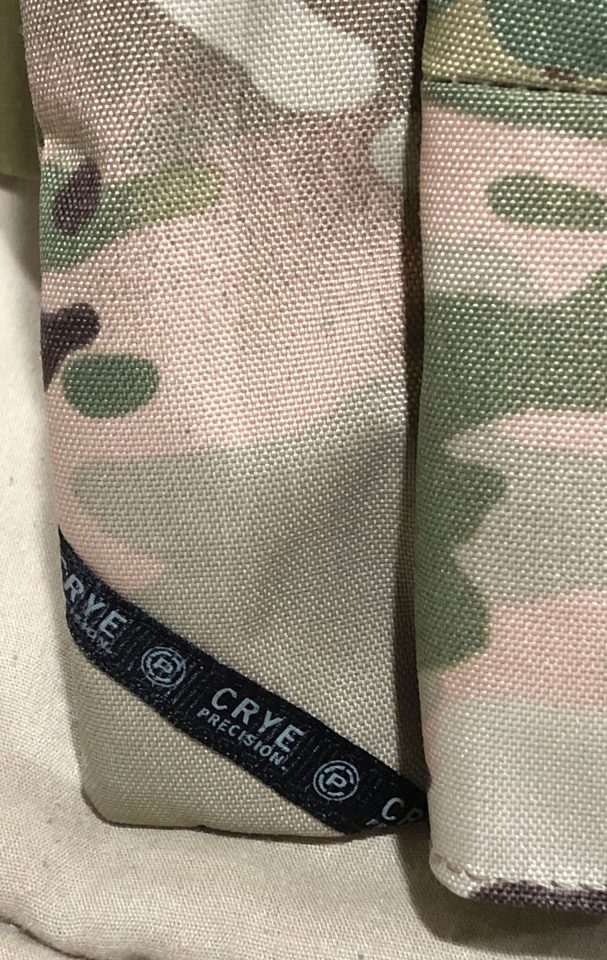
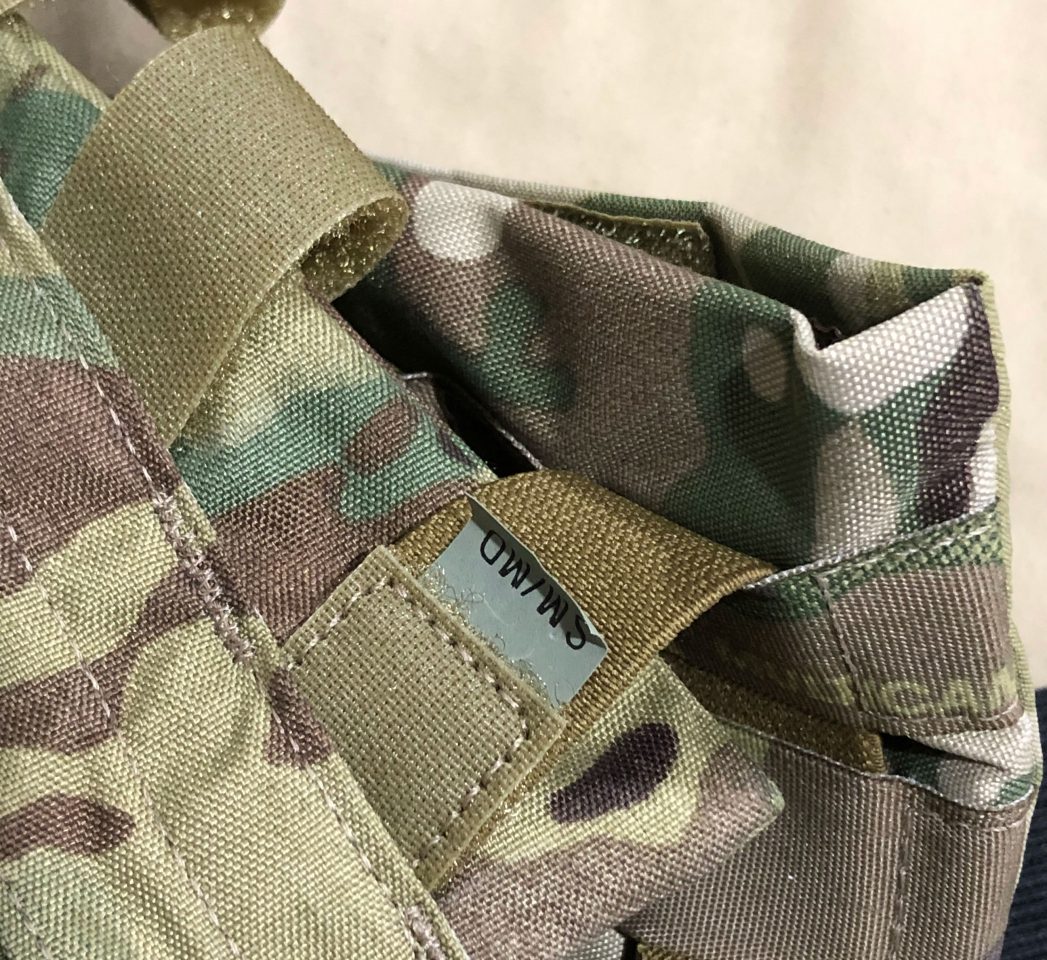
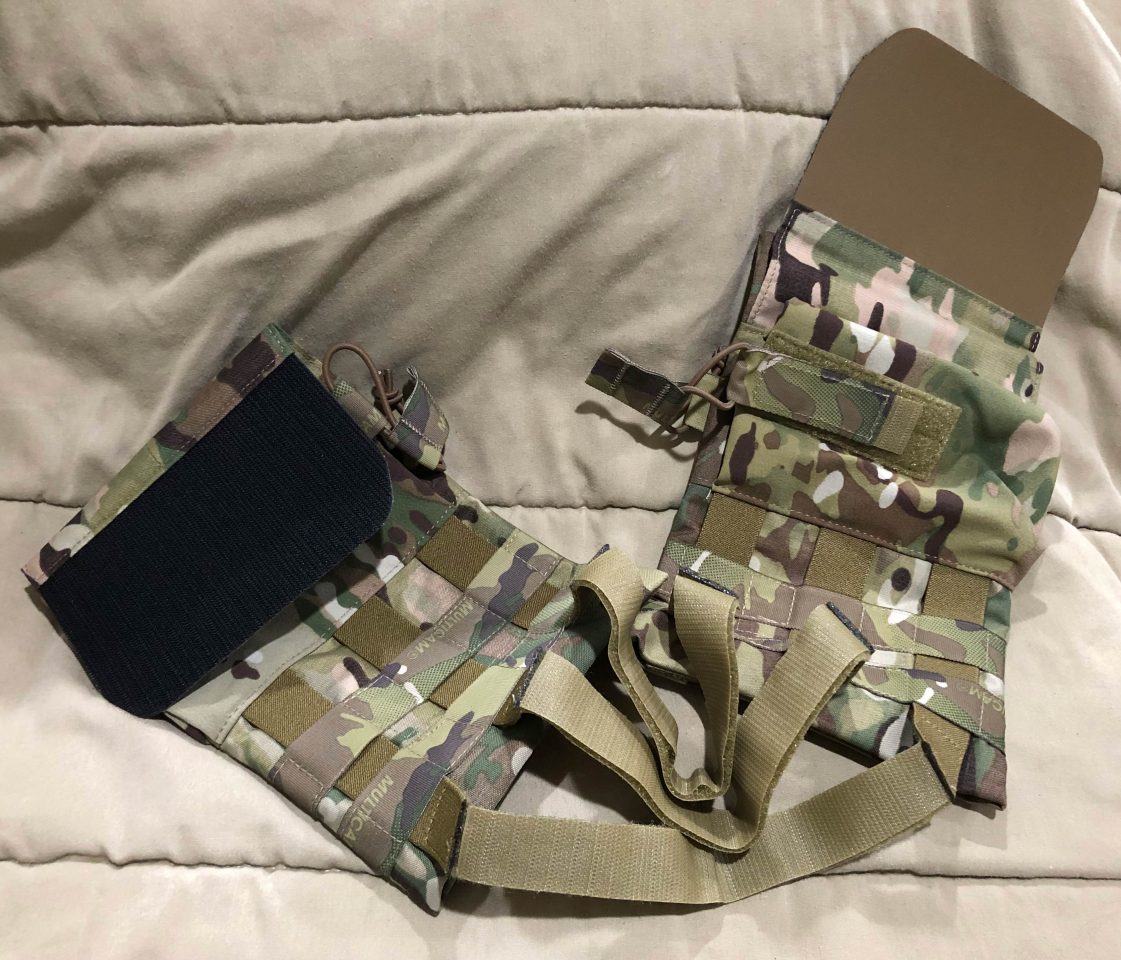
Contractor Info:
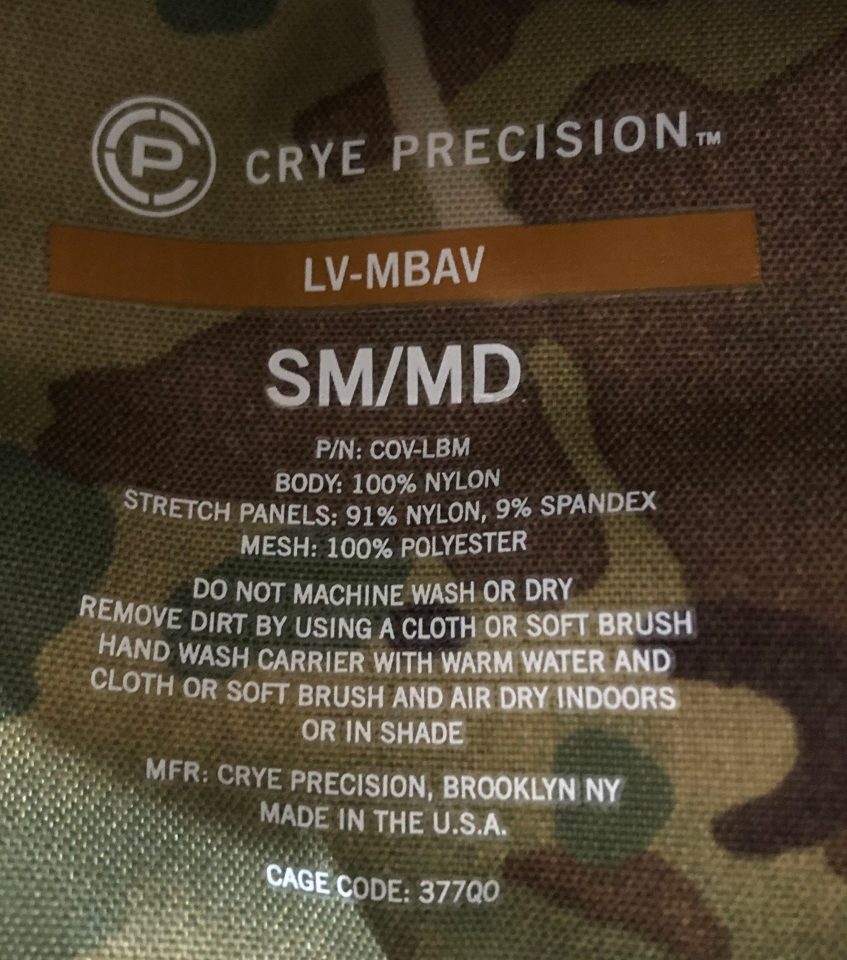
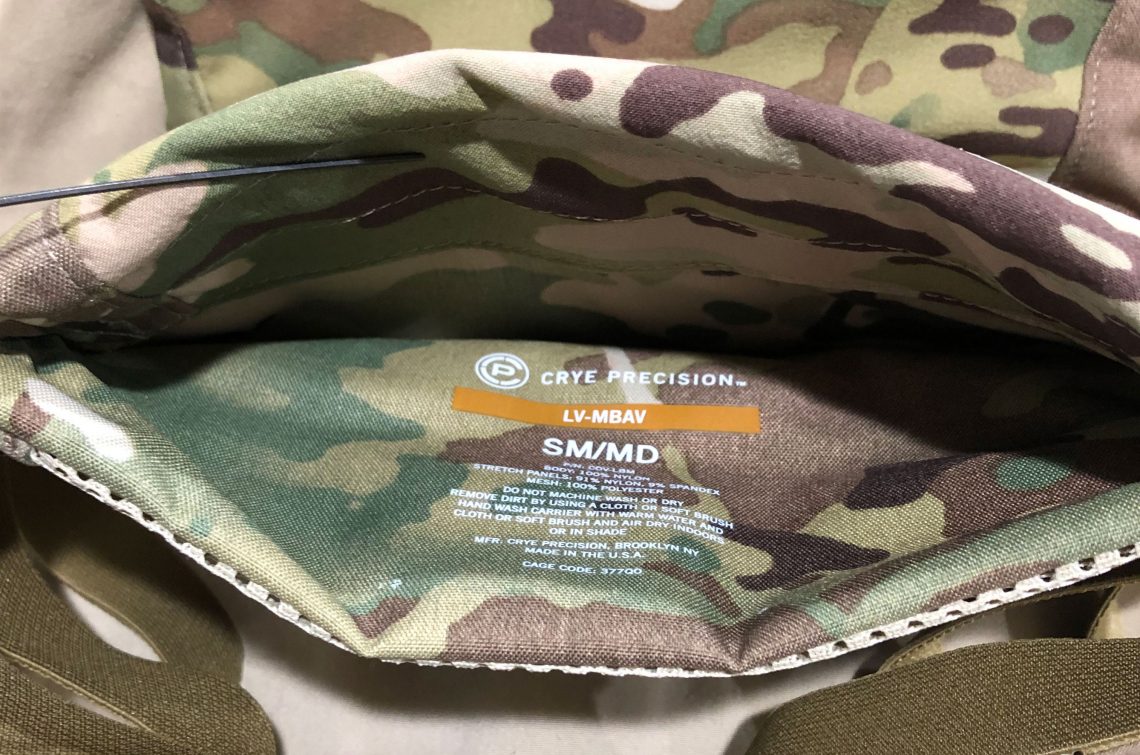
Like on the khaki example, this was silkscreened onto the material in its own pocket.
Color Comparison of Multicam vs Khaki Examples:
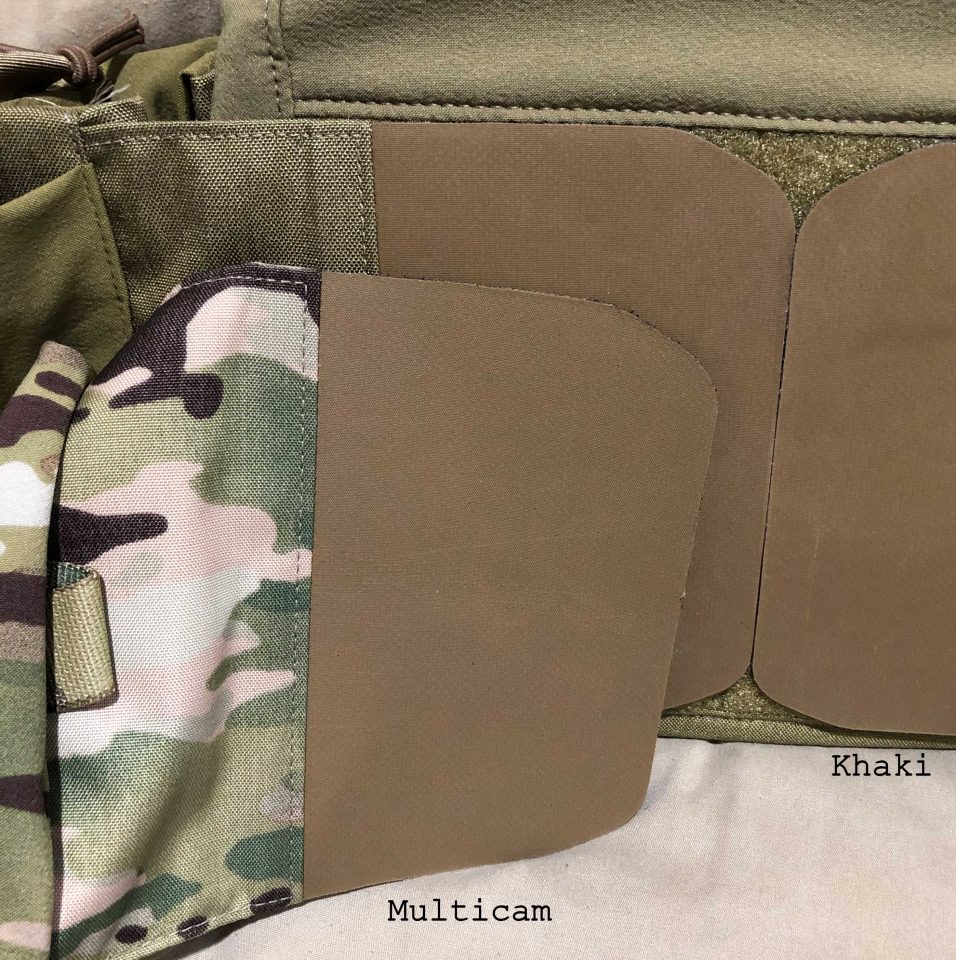
Hypalon and velcro color is identical (with slight variations between batches).
Usage Photos:
US Marine Raiders / MARSOC:
The Marine Raiders are perhaps the most prolific users of the LV MBAV. They tended to field it in the Khaki colorway starting in 2012 [9][10][11].
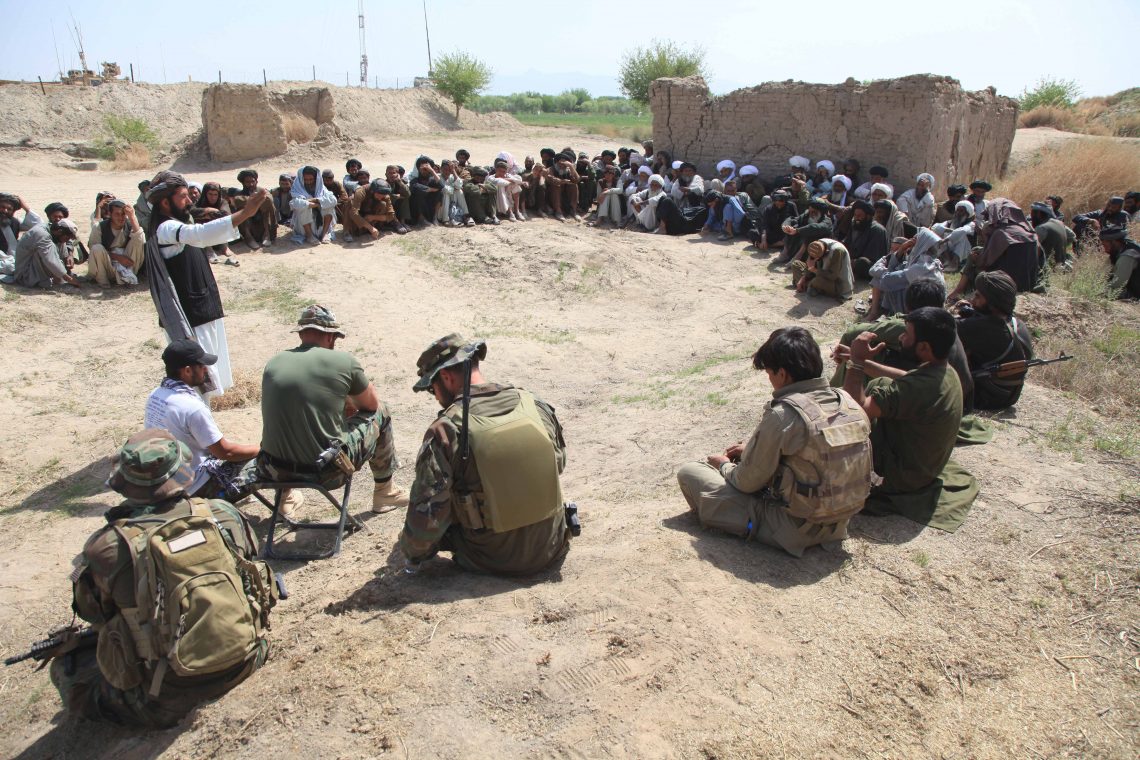
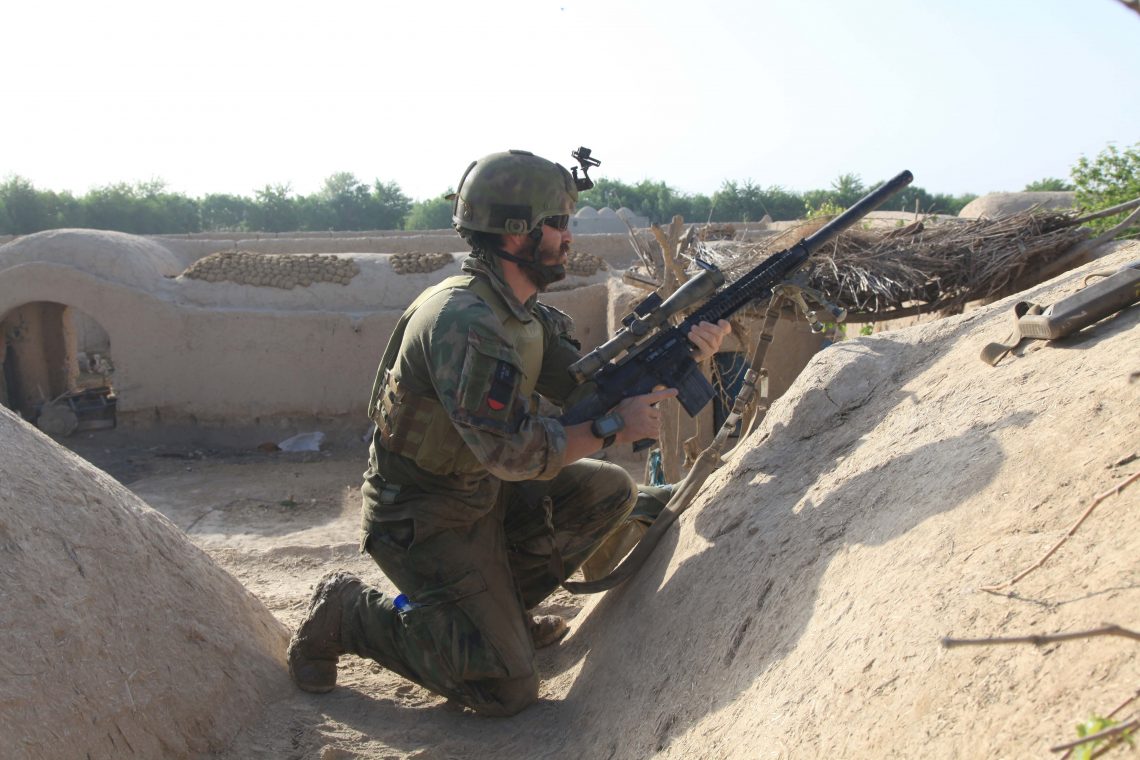
Most photos show them wearing it with M81 Woodland pattern uniforms to blend in with the local forces they work with.
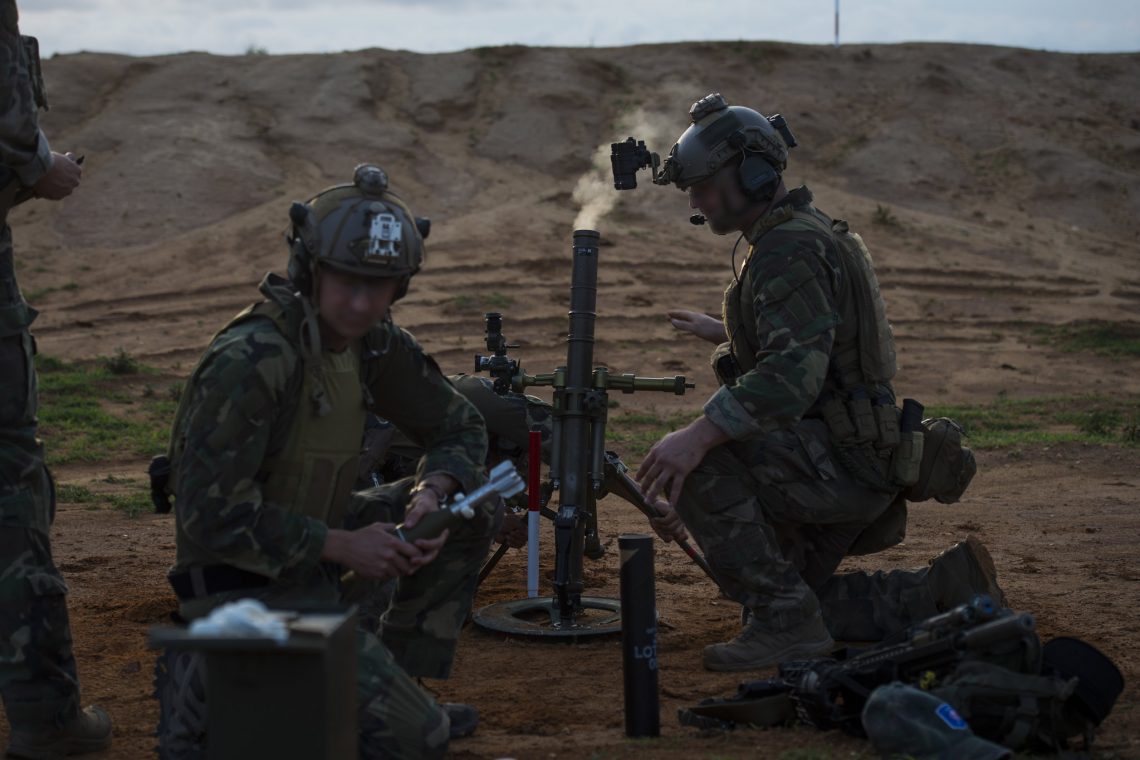
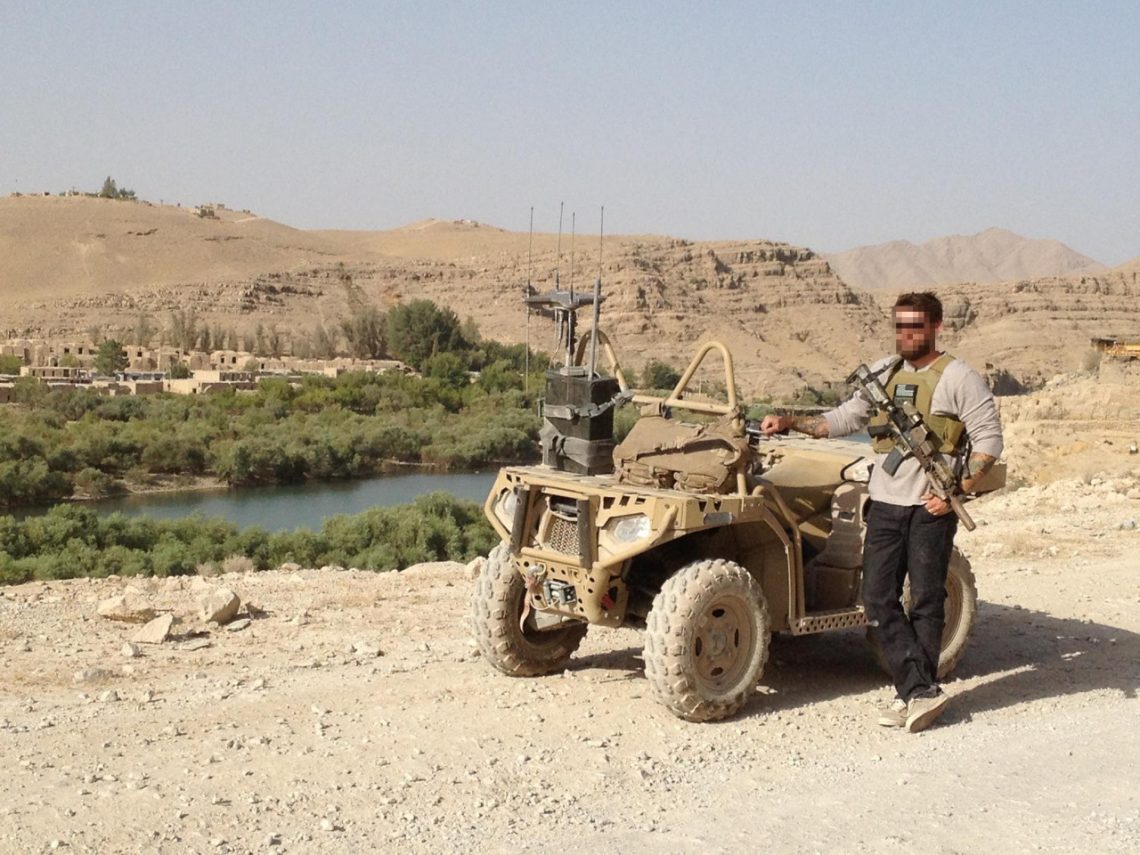
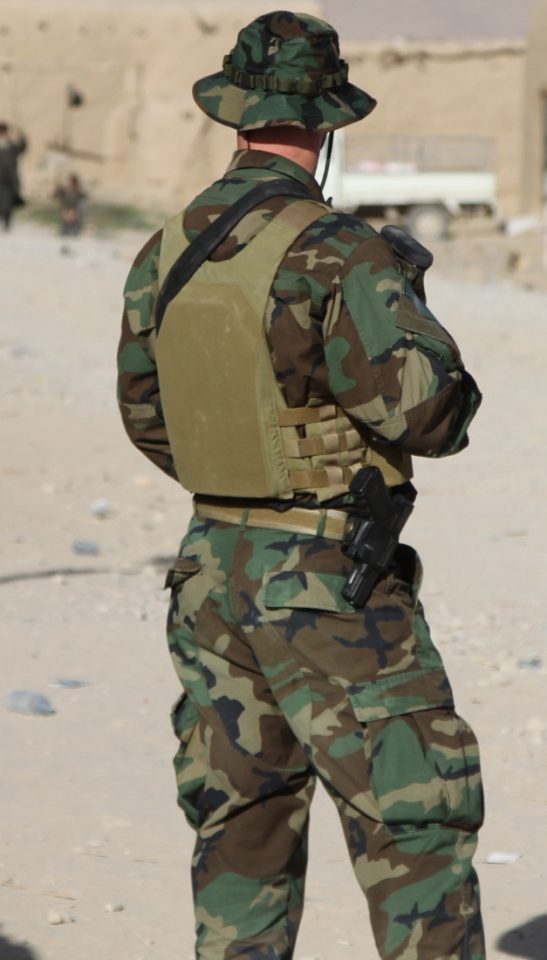
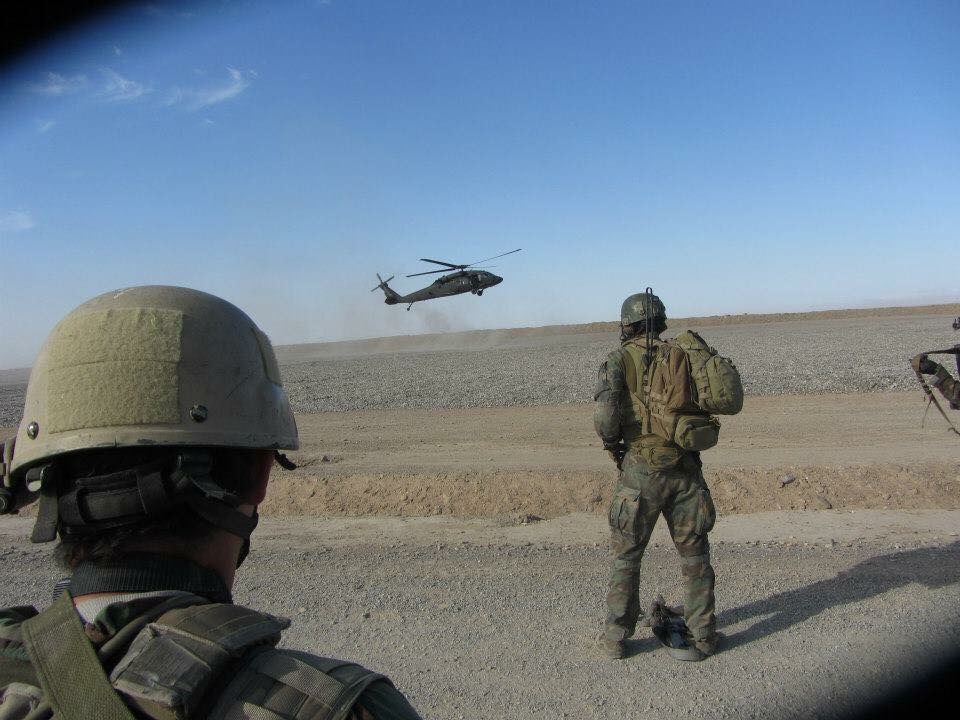
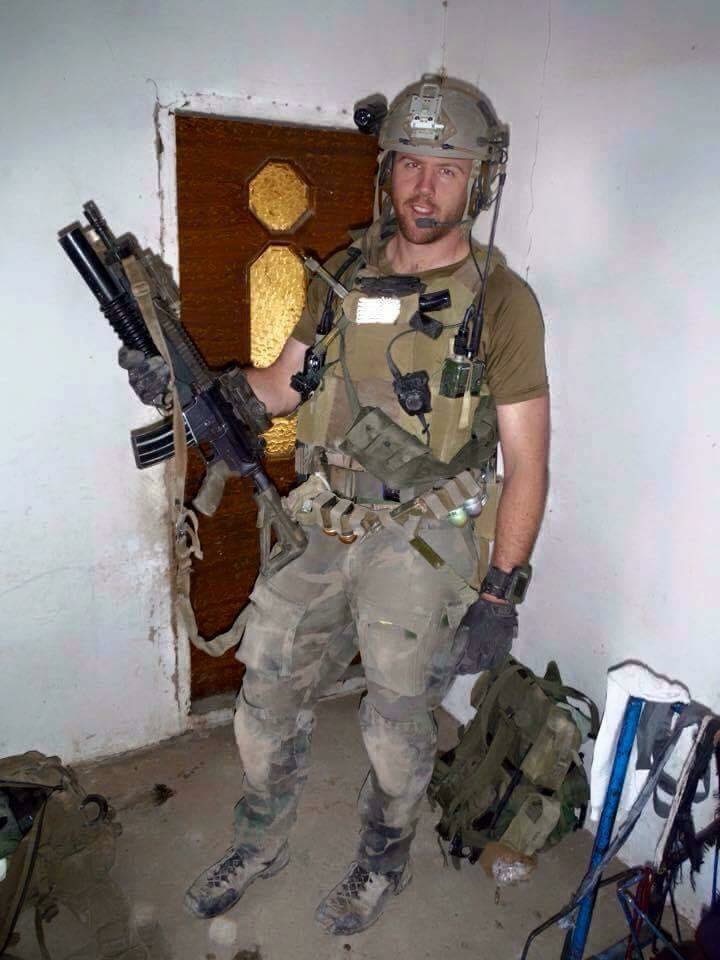
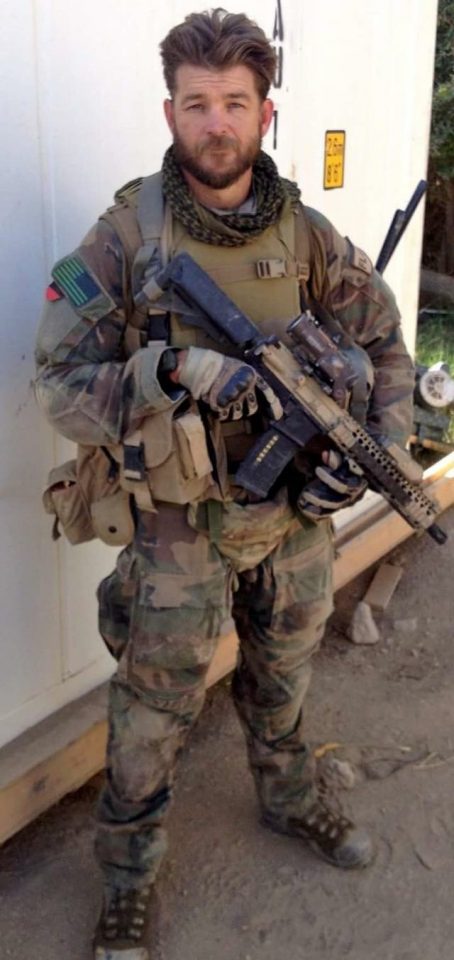
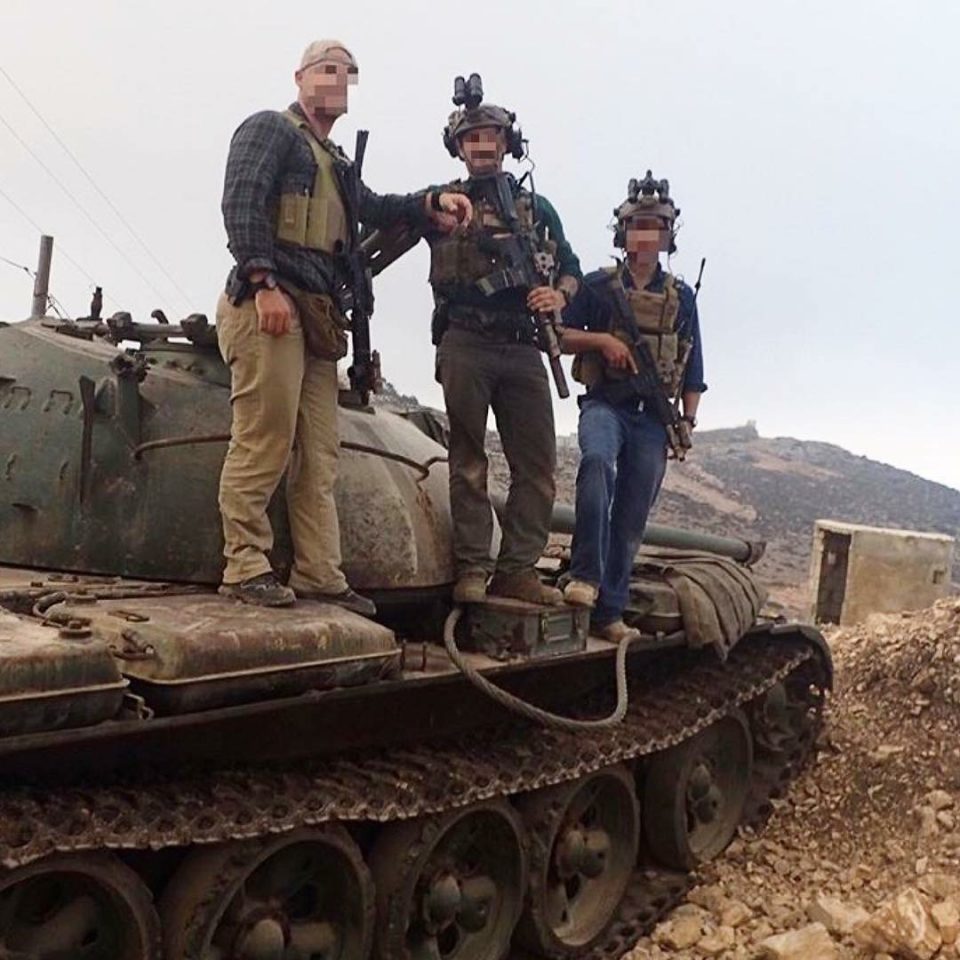
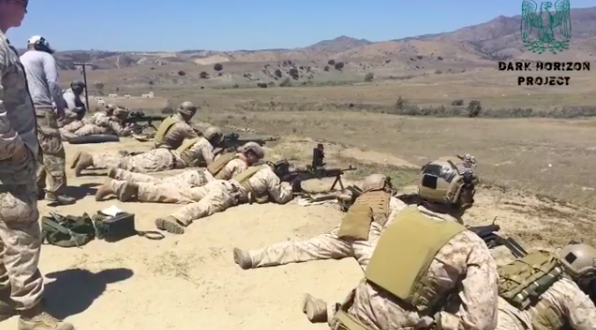

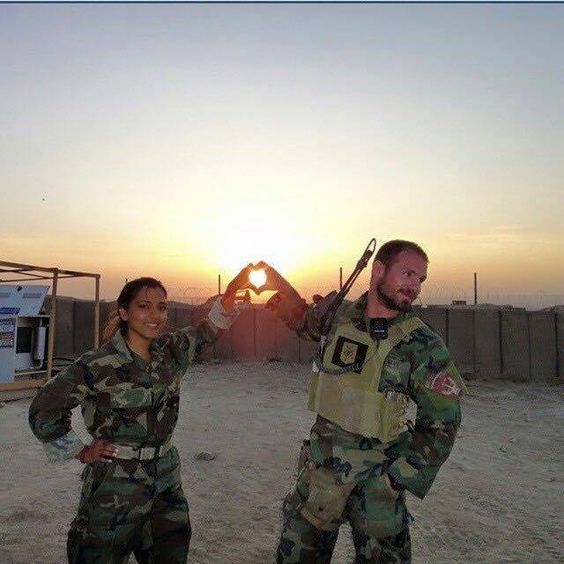
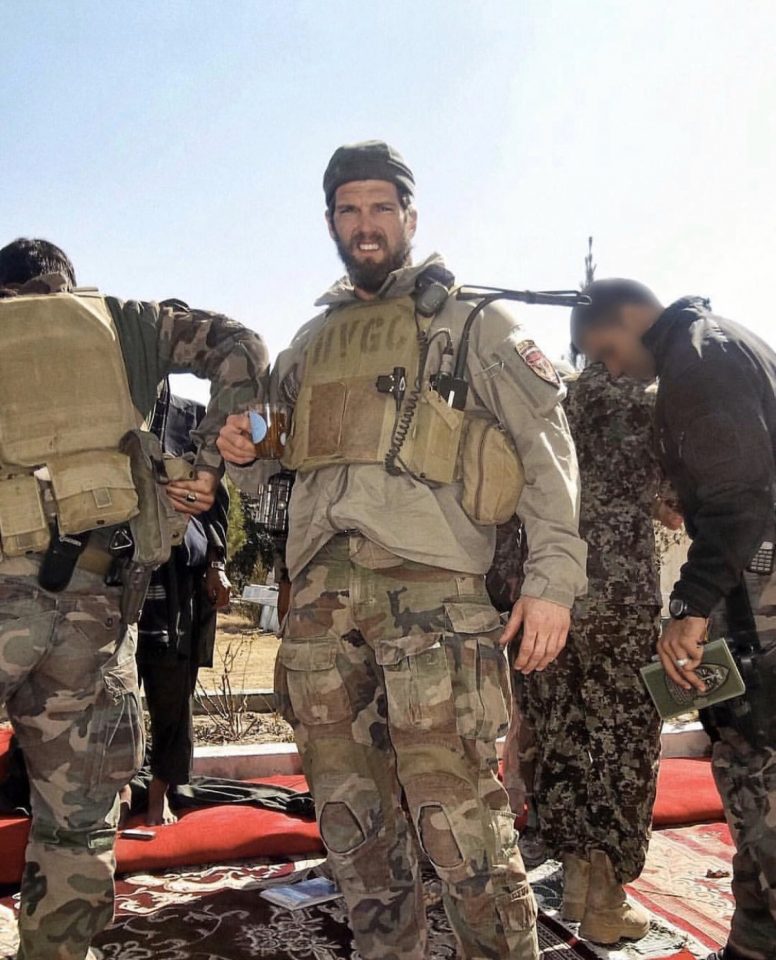
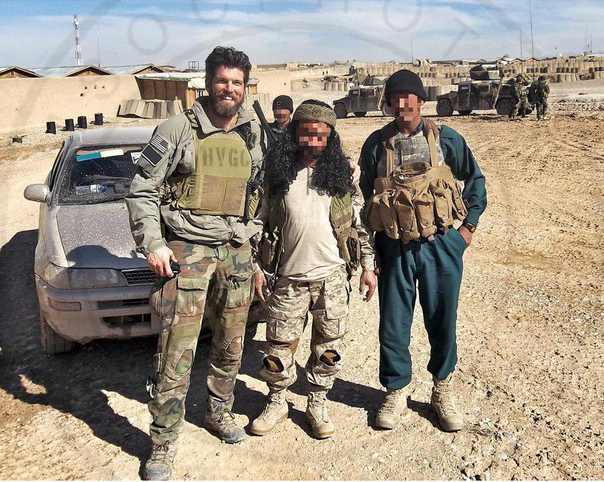

The Marine Raiders used khaki LV MBAV’s as late as 2021.

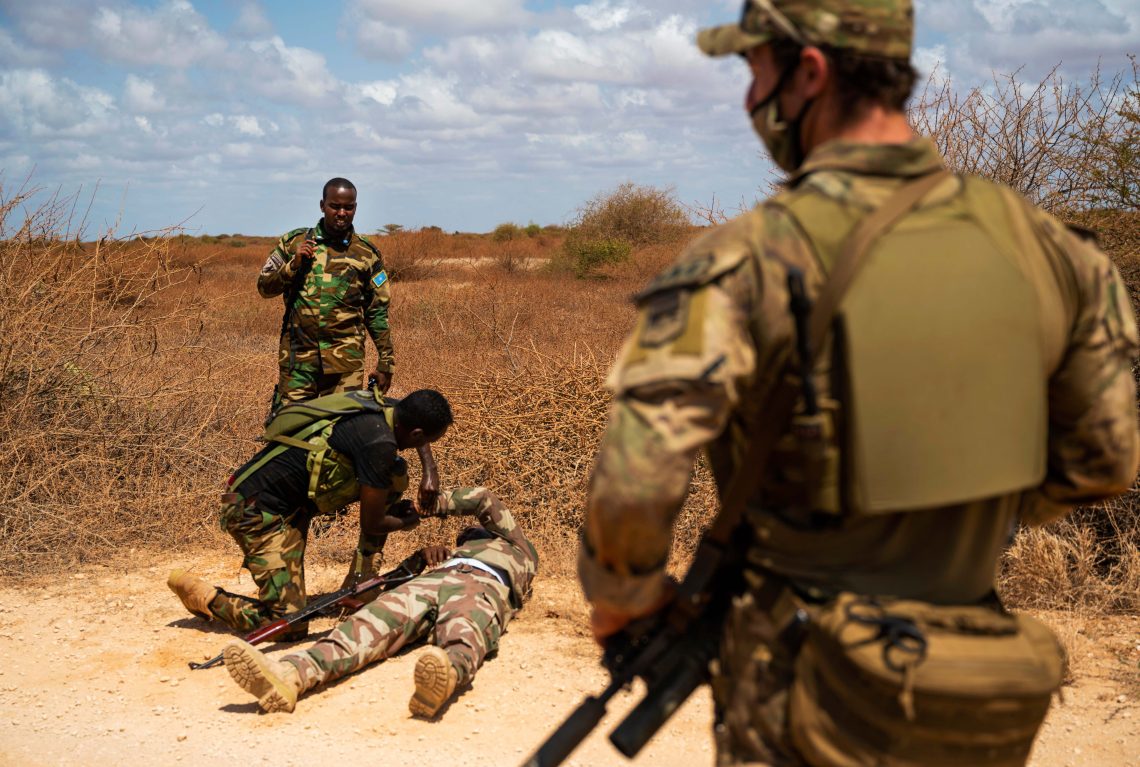
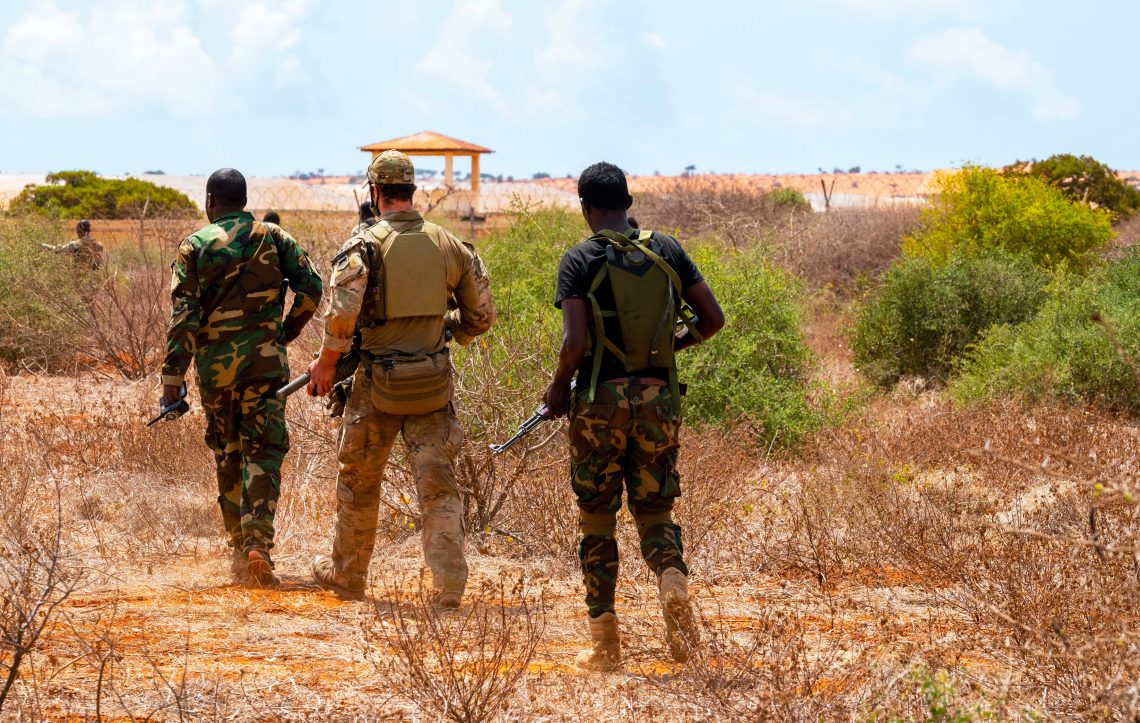


US Army
Army Special Forces and Rangers tended to use the Multicam variant.
Special Forces:
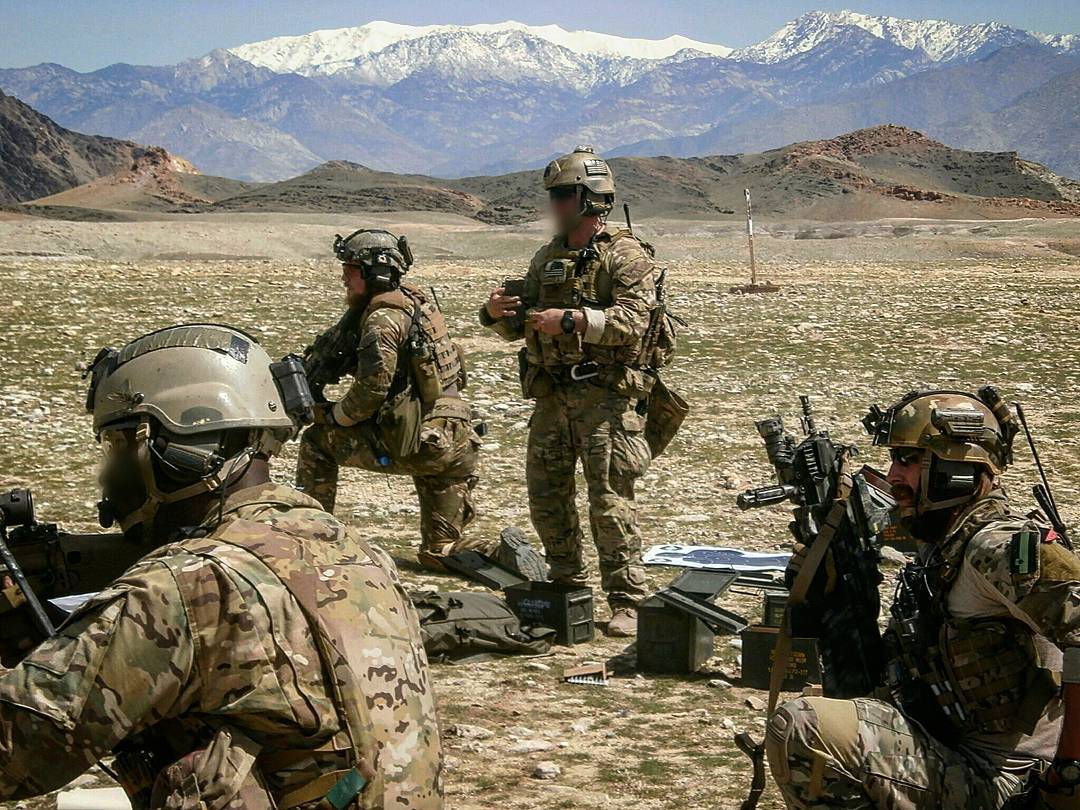
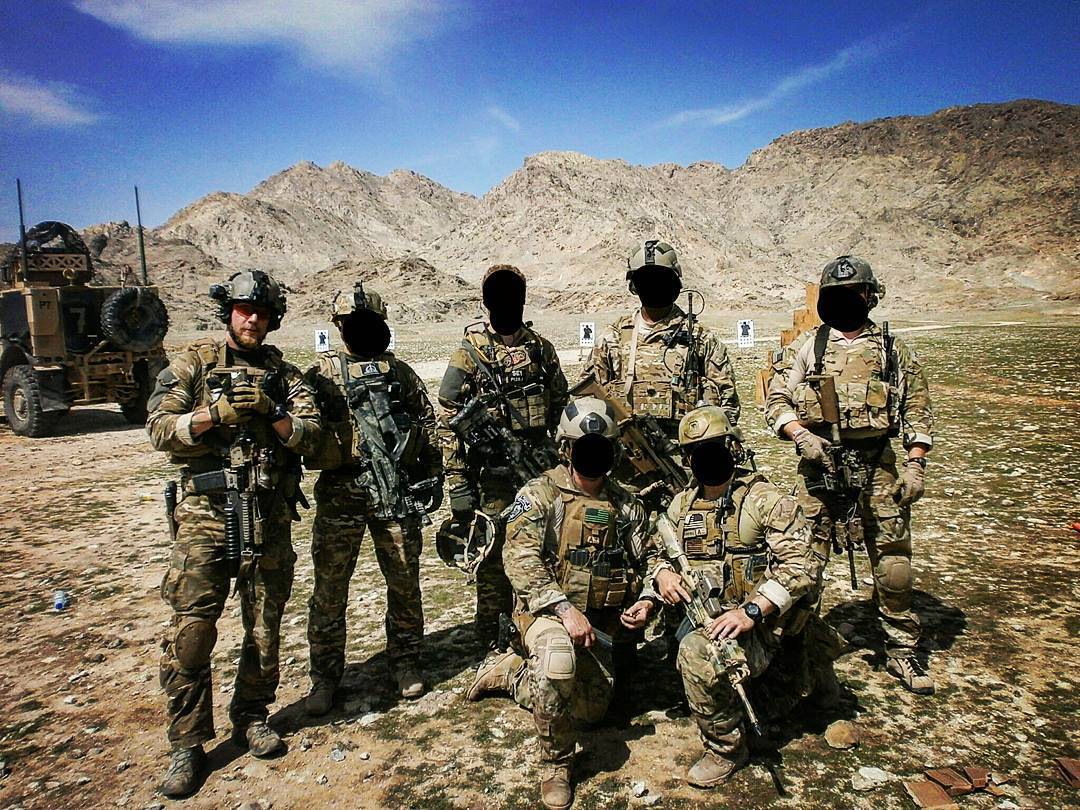
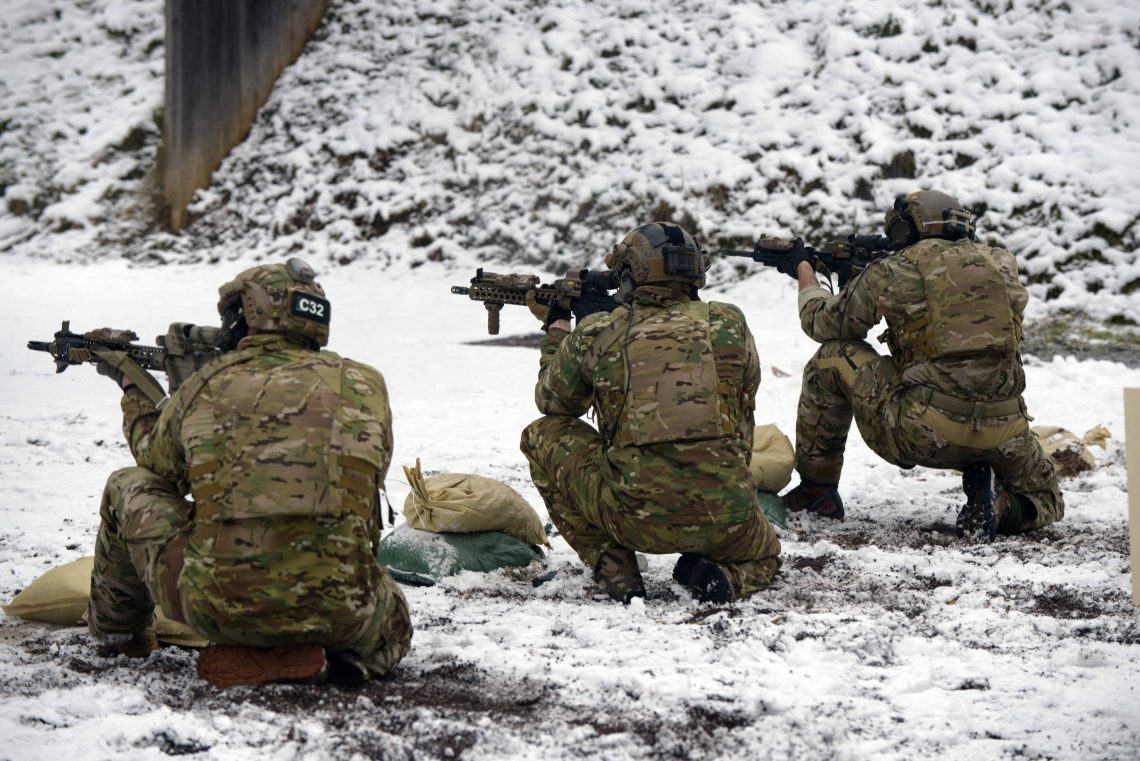
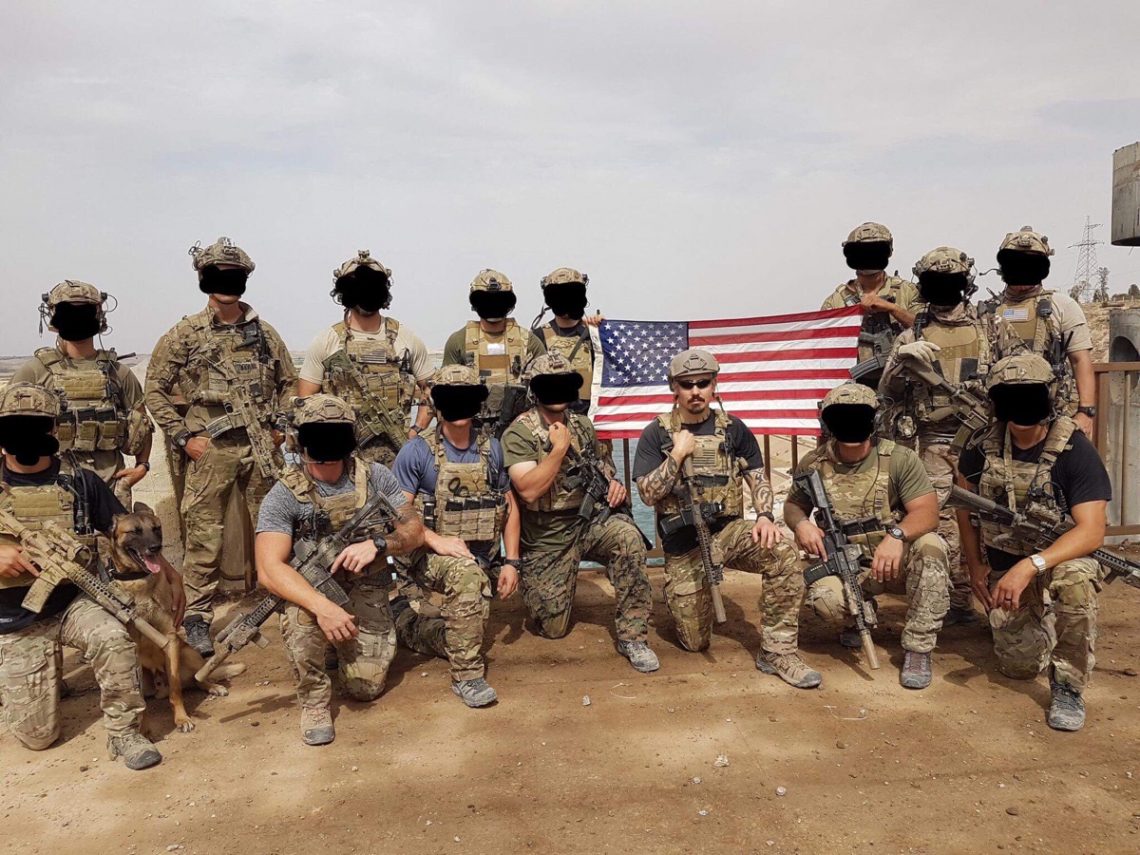
Rangers:
